
















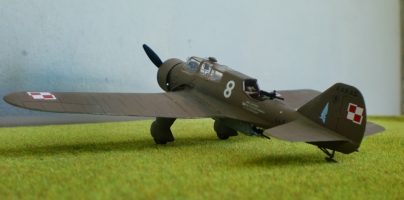
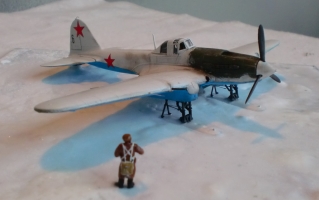
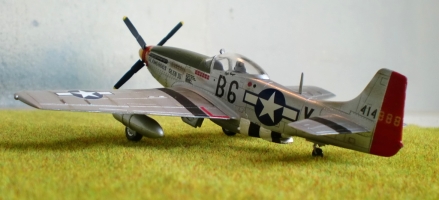
CONVENTI`S 1/72 SCALE WWII AIRCRAFT KIT BLOG
As many others, I liked to build model kits as a kid, and in 2014 I decided to return to my old passion, and started building again - this time 1/72 scale aircraft from the WWII era.
I´m not a particular skilled modeler, I just like to build and I´m also interested in the history of the aircraft and the pilots who flew with them. Therefore I will present a short history of the aircraft and the pilot (if possible).
I published my texts and pictures originally on the Wings900 forum, but unfortunately now, after they upgraded their forum software, the pictures are no longer displayed and apparently this cannot be fixed. So here they are again.
I hope you enjoy it !
30/06/2019 - North American B-25J Mitchell US Army Air Force, AZ Model/Italeri
Named after the „father“ of the US Air Force, General Billy Mitchell, the North American B-25 Mitchell was the primary medium bomber of the US Air Force during WWII. With almost 10.000 aircraft build, it saw action in almost every theatre in WWII.
A versatile design, the B-25 went through quite a evolution during its production, from a fast, lightly armored medium bomber to a heavy firepower gunship, and back to an advanced medium bomber design. The initial design went through a couple of updates, including arnament and defensive fire power upgrades, to make it ready for future combat use (when the B-25 was introduced, the United States were still neutral). The baptism of fire for the B-25 was a couple of months after Pearl Harbor, when 16 B-25 participated in the well-known Doolittle Raid, the first US attack on Japanese soil in the Pacific War. The B-25 was modified to be deployed from an aircraft carrier, and the actual raid did little damage but was a big moral booster for the Americans and a psychological setback for the Japanese who where almost undefeated up to this point in the conflict.
The Pacific Theatre remained the major operational area for the Mitchells; but level bombing was not the only task the B-25 was capable of, soon modifications were made for a designated strafer, or gunship version. With the B-25G and B-25H versions, the clear glazed bomber nose was replaced with a solid metal nose, and with a forward facing gun turret, the B-25 could fire up to astounding 10 machine guns forward, supplemented by a M-4 tank gun, one of the largest gun types installed on a WWII era aircraft. With this firepower, the B-25 was able to cause havoc on Japanese air fields and installations. The B-25J version, as shown here, was the final and most produced version of the Mitchell. It returned to the medium bomber role but modification kits and field conversions for strafer noses were still avaiable. The major difference to earlier versions was the relocation of the gun turrent to the front area near the cockpit and a larger rear gun stand. As mentioned, the Pacific was the major operational area of the B-25 but it also saw action in China-Burma, North Africa and the Mediterranean. The USAAF did not deploy the B-25 in northern Europe but the Royal Air Force used them in larger numbers, and the Soviet Union on lend-lease basis.
Not unsurprisingly, nose art was quite common on USAAF B-25, but this B-25J of the 12th Bombing group, 12th Air Force based near Naples/Italy in 1944 is surely an eye-catcher even without the “classical” nose art. When the 12th Bombing group was reassigned to Asia, the painted a large farewell message on the wings: “Finito Benito Next Hirohito”.
This kit is from Czech company AZ Model, but it is not a short run-kit, but a re-boxed Italeri mould. First released by Italeri in 1978, it is quite old and not so detailled as the newer Airfix or Hasegawa toolings, but quite nice, although certainly lacking in interior details. Nevertheless a fun kit and the decals were fine, too. Very nice kit and as one of the largest models I build in 1/72 scale, still on the search for a decent display place.
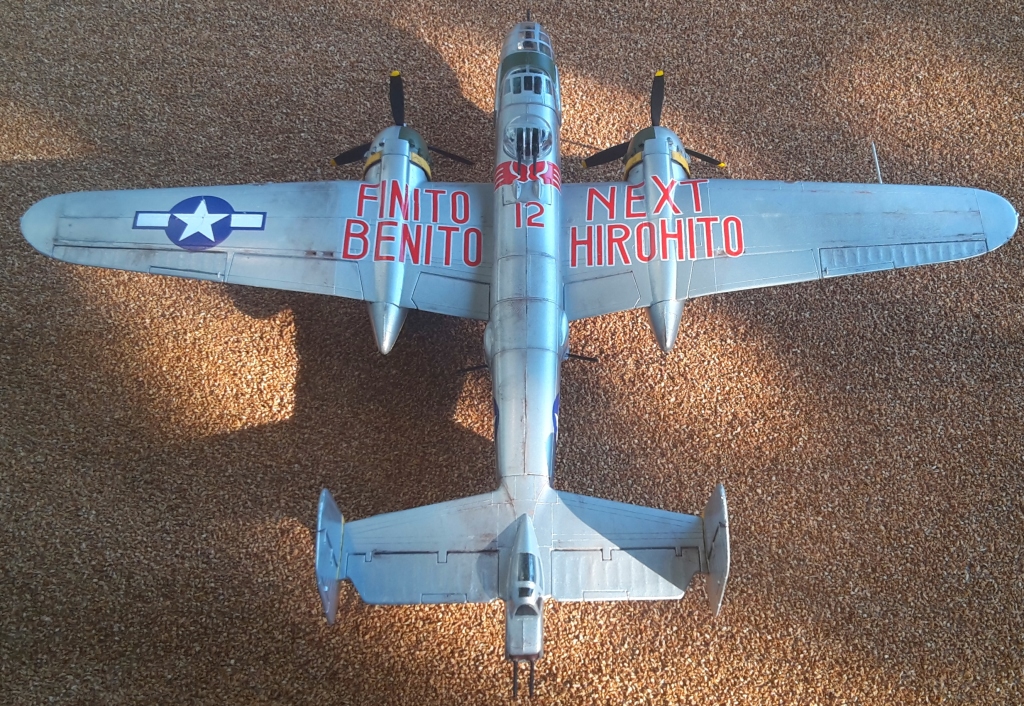
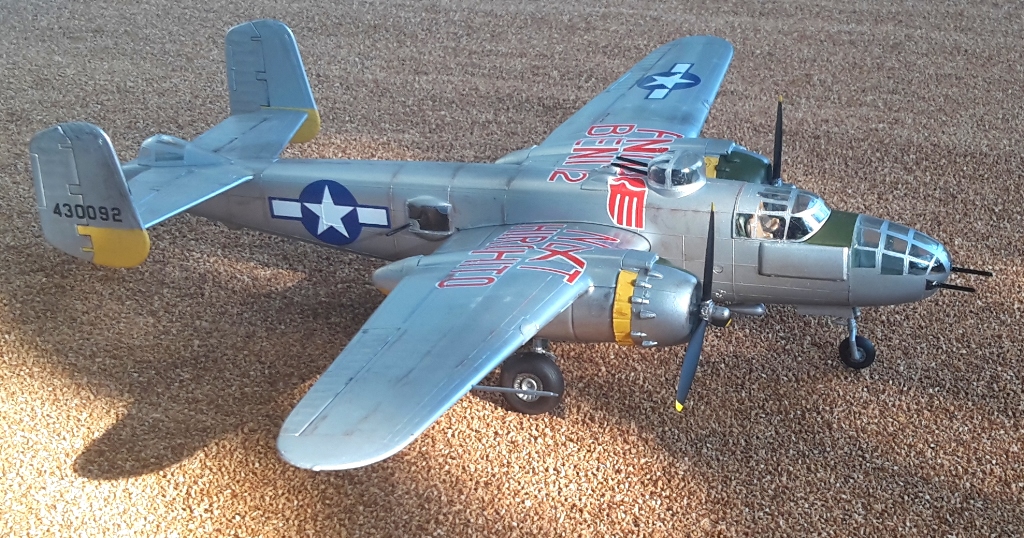
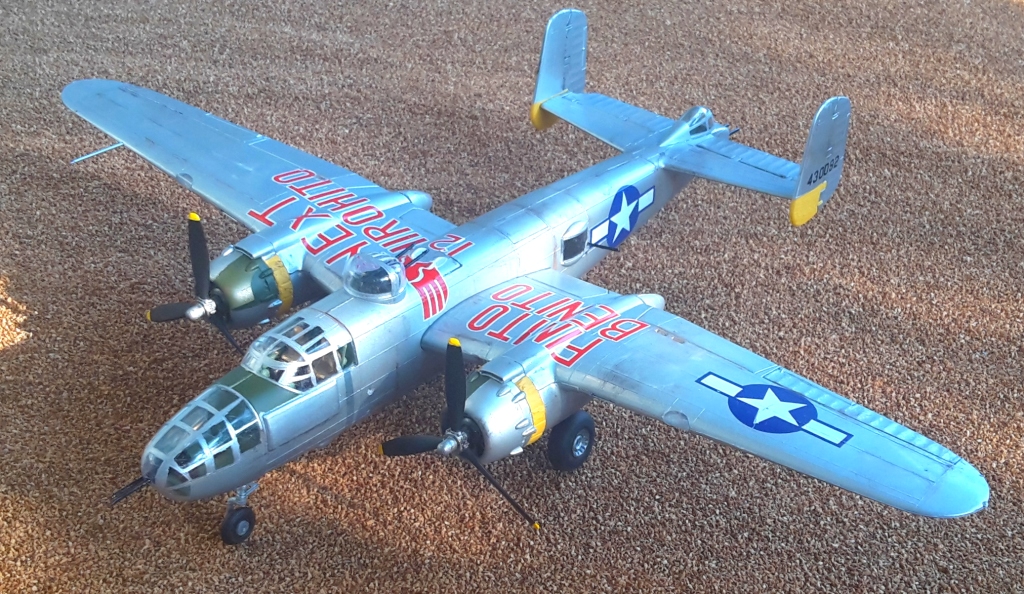
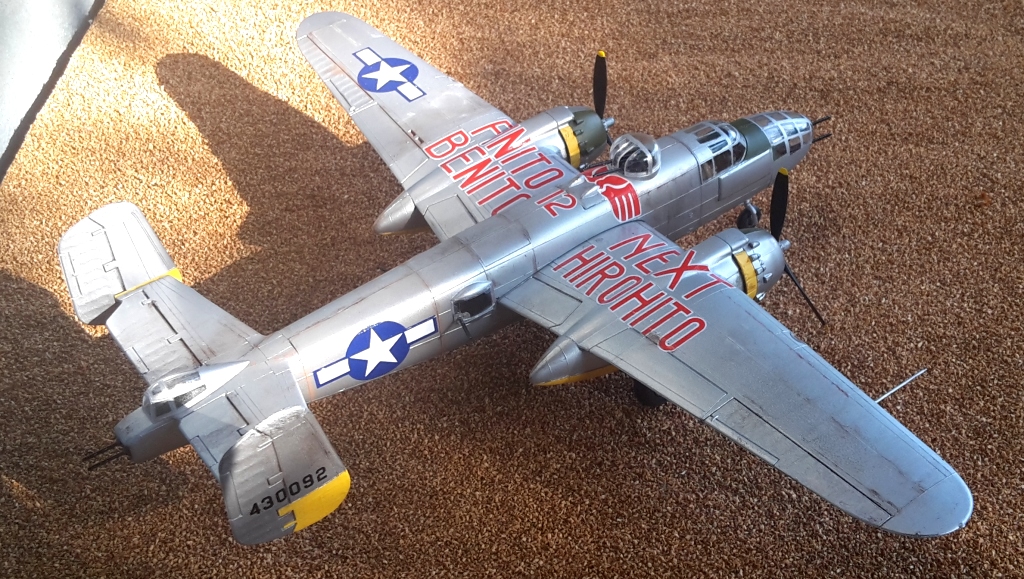
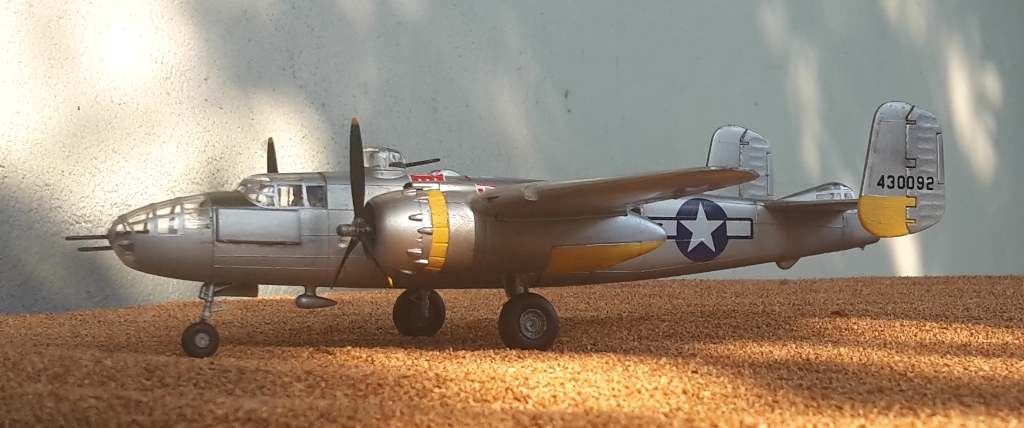
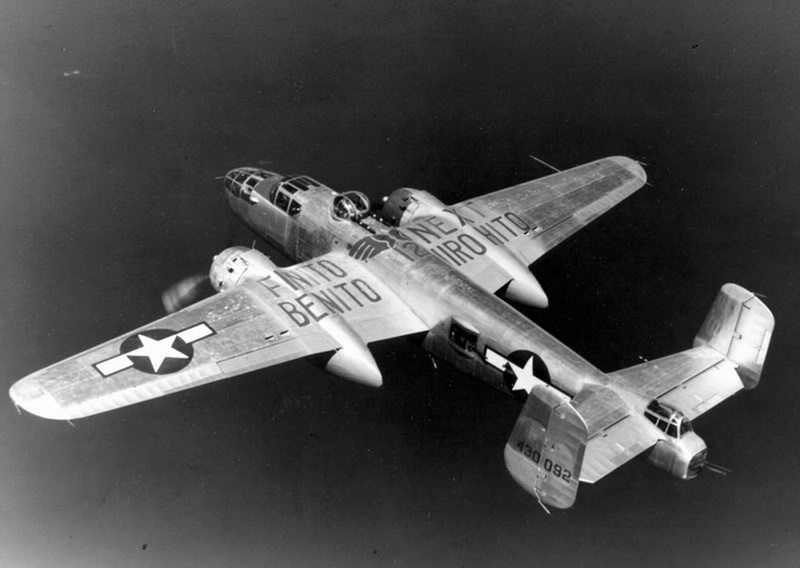
05/06/2019 - Gloster Gladiator Mk I Swedish Air Force, Airfix
A handful of biplane fighters types were still in operational service when WWII started; most of them were phased out soon, like the British-build Gloster Gladiator. The last biplane fighter designed for the Royal Air Force, the Gladiator was already outdated when it first entered service in 1937 – the Hawker Hurricane was introduced only a few months later and the Spitfire was already in flight testing at the time. Nevertheless, the Gladiator saw action in almost all theatres in WWII, and was a major export success.
Two versions of the Gladiator were produced, the Mk I and the Mk II, the major difference was an updated, more powerful engine and a three-blade propeller for the Mk II. Nimble and maneuvrable, the Gladiator was a capable fighter aircraft but way to slow compared to the new generation of monoplanes; also it´s rifle-caliber arnament was relatively ineffective against heavily armored targets. For the RAF, the Gladiator saw extensive action with the 263 Squadron in Norway, but heavy attrition forced the British to evacuate – the remaining Gladiators of the Squadron were lost when their aircraft carrier was sunk on the way back to the British mainland.
Maybe the most famous role of the Gladiator was the defence of Malta, when the underequipped RAF base at Hal Far fought against the overwhelming air power of the Germans and Italians. Myth says that only three Gladiators, named Faith, Hope and Charity, were operational and took a stand against the attackers, but in fact there were more Gladiators avaiable, and they got their names after the campaign ended. However, the defence was successful and the Gladiator squadron was soon supplemented by new-arriving Hurricanes. Another major operation was in North Africa, where the Gladiator faced it´s Italian biplane counterpart, the Fiat G.42.
As mentioned, the Gladiator was a major export success in the late 1930s, which larger quantities delivered to Sweden, Finland, Belgium, Ireland, Greece, China and others. The Swedish Air Force took delivery of 37 Mk I (Swedish designation J8) and 18 Mk II (Swedish designation J8A). Shortly after the outbreak of WWII, they were declared obsolete and relegated to training squadrons. This J8 F8-10 of the 8th Squadron is shown as it looked like in late 1939. As Sweden was a neutral country in WWII, no Gladiators were lost in combat except a few operated by a Swedish volunteer squadron supporting the Finish Air Force in the 1940 Finish/Russian Winter war. These Gladiators had Finnish camouflage and were equipped with ski landing gears. The last Gladiators were retired from Swedish service in 1947, one is still on display at the Swedish Air Force museum.
The Gladiator is a part of the Airfix catalogues since ages; the old mould was finally replaced by a newy designed kit a couple of years ago and it is really nice and fine detailled. Assembling biplanes can always be a bit tricky, but this one was really easy thanks to a clever design by Airfix. Decals are from SBS models.
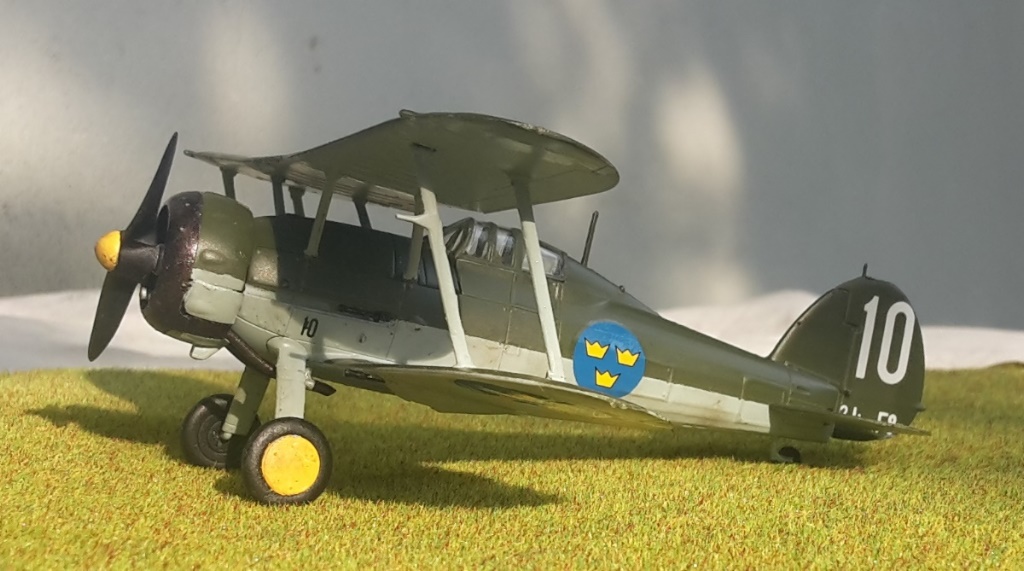
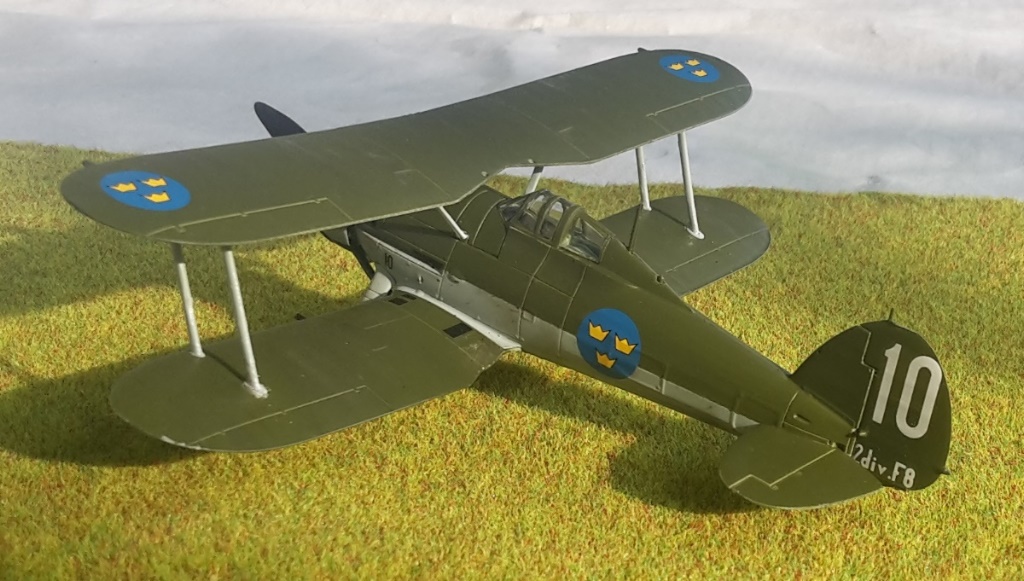
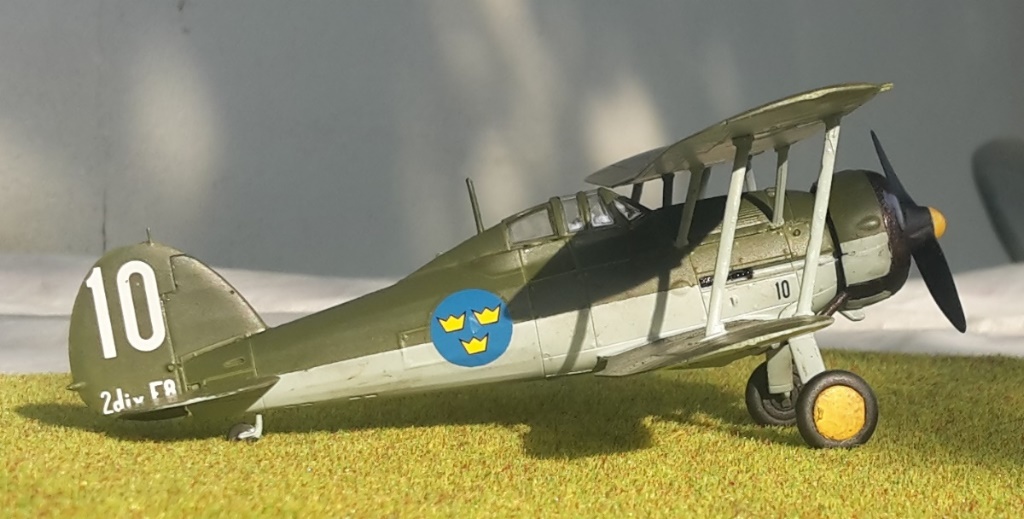
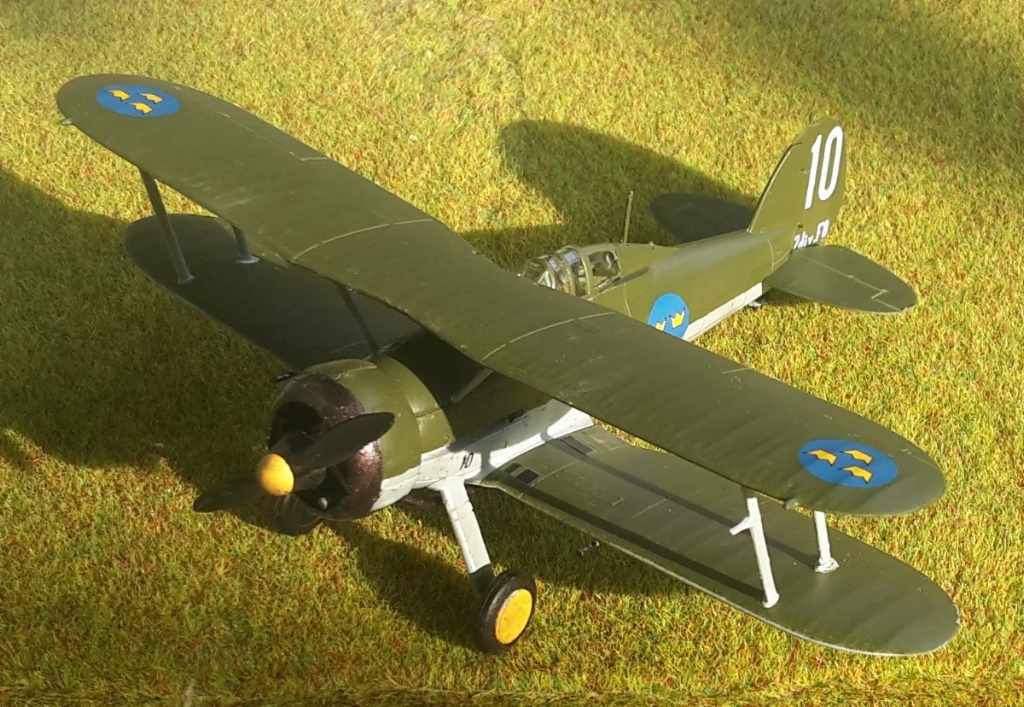

17/02/2019 - Messerschmitt P1101 V1 Luftwaffe, Huma Models
It is quite astounding how many different aircraft projects
were still under development in Germany in the last months of the war, despite
dwindling resources. Many of these projects never left the drawing board, a few,
like this Messerschmitt P1101, made it to the prototype stage but never flew.
However, this jet experienced some sort of “resurrection” later in America.
With a worsening war situation in 1944, the German Air Ministry initiated the
so-called fighter emergency programme, demanding development of an single seat,
single jet-engine powered interceptor. Messerschmitt´s entry, the P1101, did not
win but the Air Ministry requested Messerschmitt to further investigate in this
project as they saw some potential with it. The P1101 was quite radical in it´s
aerodynamical configuration for the time. As very high subsonic speed was
required, conventional wings were not efficent enough so a highly swept wing was
developed (which later became the standard for almost all jet aircraft designs).
To test different wing configurations, the sweep angle of the wings could be
changed manually on the ground, between 35 and 45 degrees. So it was the first
variable-sweep wing ever developed. To ease up development, parts from other
Messerschmitt models were used in the design; the basic wing was taken from the
Me 262 jet and the main landing gear from the Bf 109. However, time was running
out and the single, unfinished V1 prototype was found by American soldiers
hidden in a tunnel, in Bavaria in late April 1945. The aircraft was 80%
finished, with a mockup Heinkel HeS 011 jet engine installed (the most advanced
German jet engine at the time).
Although it was damaged during the transport to the USA, hopes were still high
to get this aircraft in the air. An American Allison jet engine was installed,
but crucial design documents were missing and no flight was ever conducted. The
P1101 was later handed over to the Bell Aircraft Company for further study. It
was the basis for the Bell X-5 prototype, first flown in 1951. Although it was
not a carbon-copy of the German design, it was highly influenced by the P1101.
The main difference now was that the sweep angle of the wings could be changed
by electric motors in flight.
Two X-5 prototypes were build, and the design was intended as a prototype for a
low-cost jet interceptor for NATO partners. However, depending on the sweep
angle, the X-5 displayed vicious flight and stall characteristics, leading to
the loss of one prototype and death of the test pilot. Deemed to dangerous and
eventually too small, the X-5 programme was cancelled and the remaining X-5 was
retired in 1958 and transferred to the National Museum of the USAF, where it
remains ever since. What happened to the original P1101 prototype is not known –
it was probably scrapped.
There are a few kits of the P1101 avaiable in 1/72 scale, but mostly in
“Luftwaffe ´46” (what-if) designs. Huma Models of Germany made a P1101 that
could be build in it´s original configuration, as it was found in Germany and
later displayed by the Bell Corporation. It can be build without engine cover,
as it appears on most period photos, which is a nice touch. The kit even allows
to build a later design P1101 with T-tail (that was never build). A short-run
kit from the 1980s, it is not too detailled but the engine is done nicely.
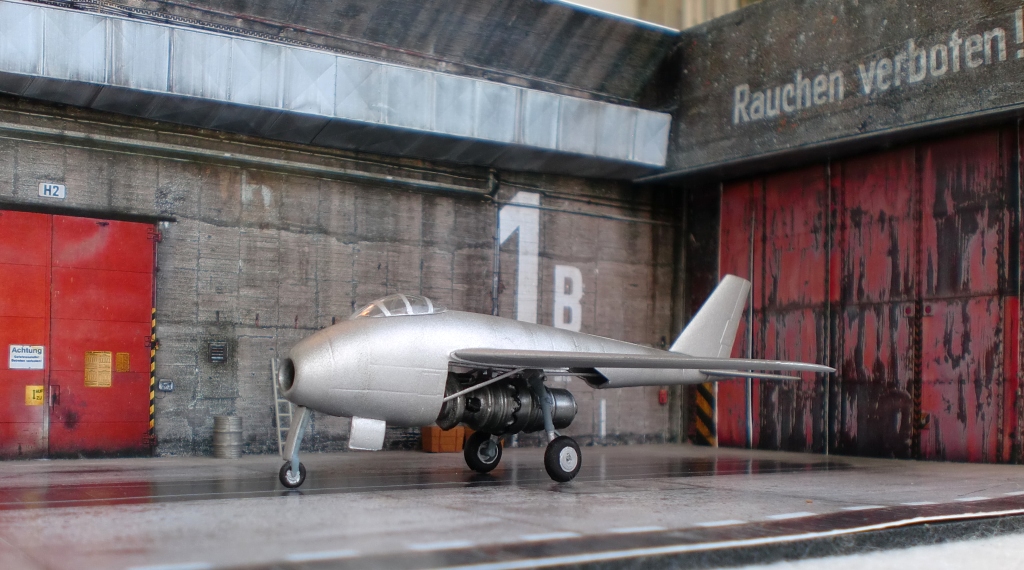
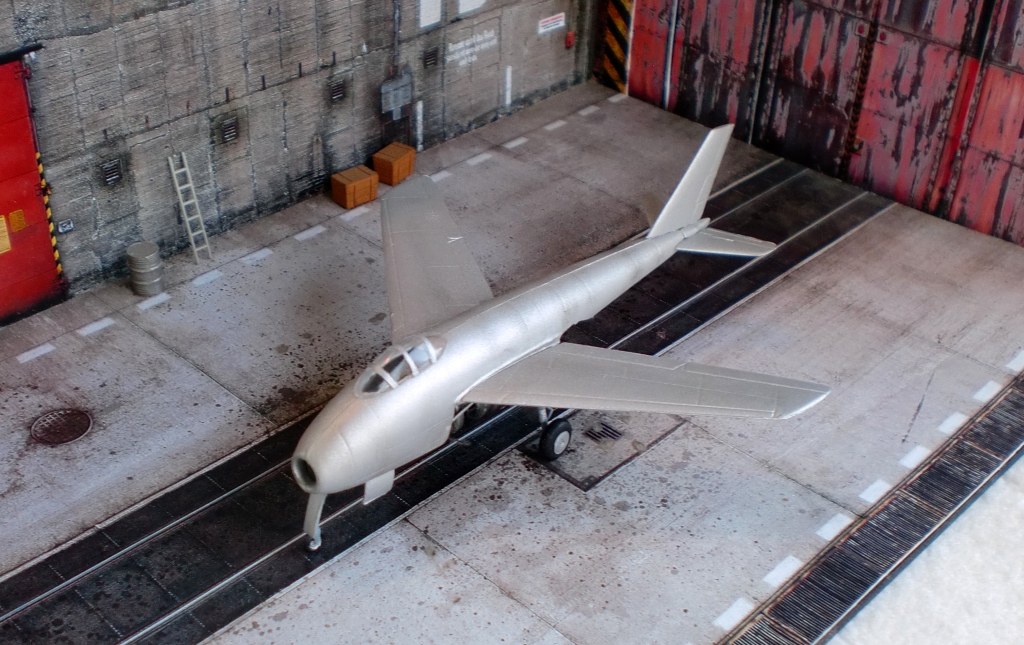
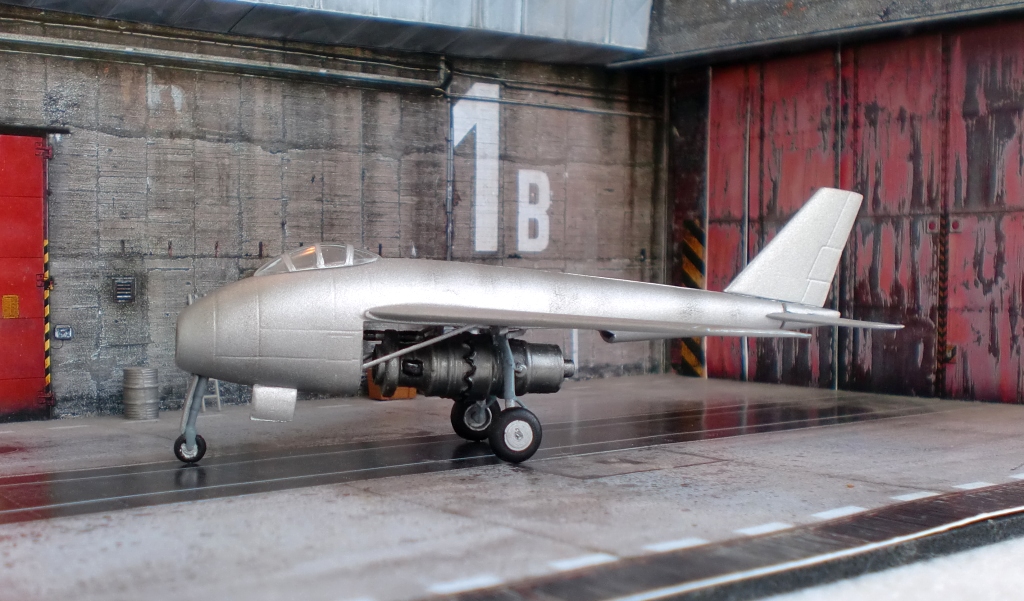
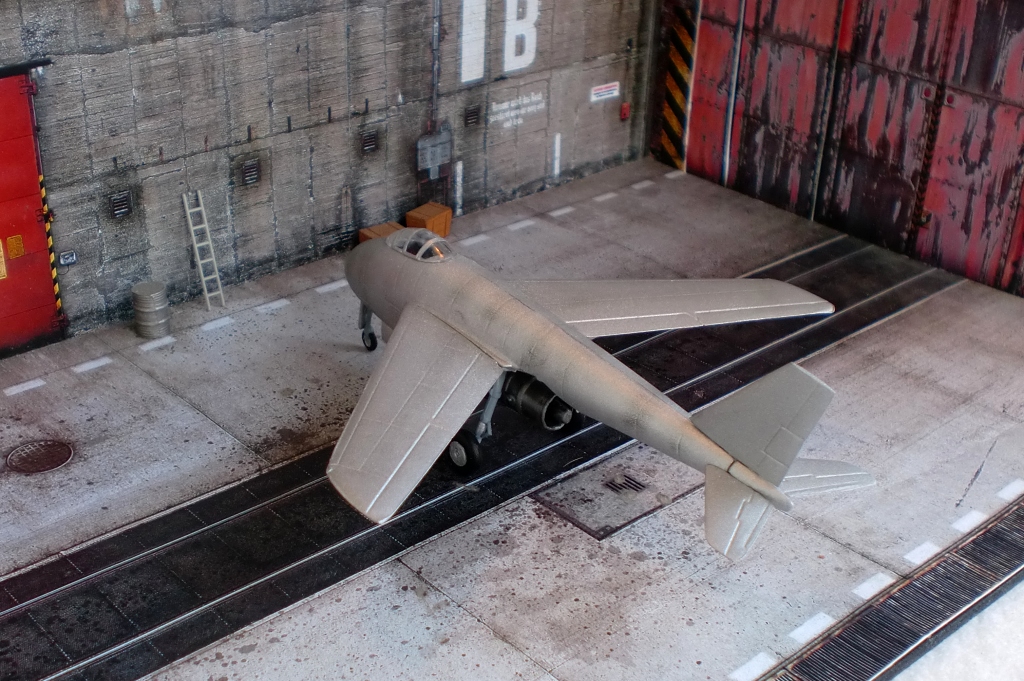
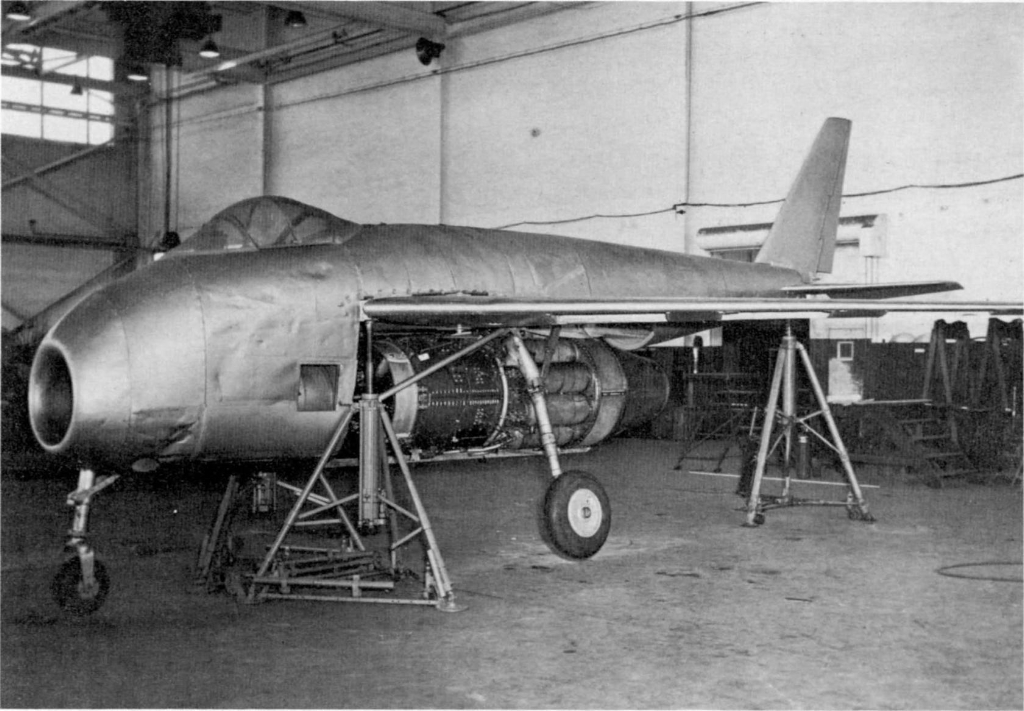
Bell X-5:
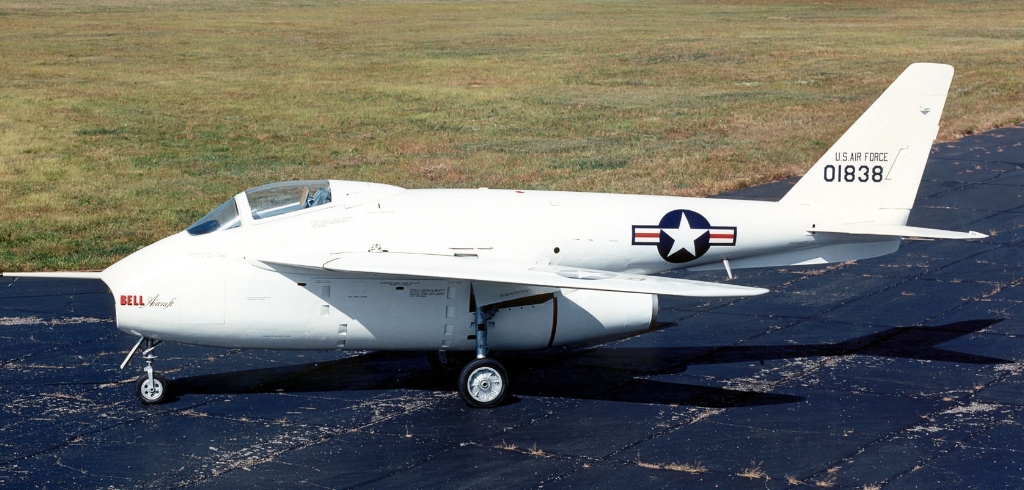
27/01/2019 - MiG-3 Soviet Air Defense Forces/Moscow Air Defence, Hobbyboss
The Mikoyan-Gurevich (MiG) Design Bureau ist best known as the main supplier of jet fighter aircraft for the Soviet/Russian Air Force and Eastern bloc states; but the roots of the company trace back to WWII, where the MiG-3 was their first mass-produced, and only, propeller fighter aircraft.
The MiG-3 was a refinement of the MiG-1, designed as a high-altitude interceptor. The performance of the prototype was impressive, as it was one of the fastest fighter aircraft of the time (around 1940). By June 1941, when the Germans invaded, the MiG-3 was the mainstay of the Soviet Air Force, although at the time there were more aircraft avaiable than trained pilots. Training proved to be tricky, as the MiG-3 was found to be diffcult to fly and very dangerous to handle for novice pilots – it had high landing speeds, numerous technical defects and unpredictable stall and spin characteristics responsible for quite a few accidents.
And unfortunately, the high altitude performance of the MiG-3 was more or less worthless – air combat on the eastern front took place at low to medium altitudes, where the performance of the MiG-3 was poor. Above 23.000 ft, the MiG-3 was faster compared to the Messerschmitt Bf109E, the German main rival at the time, but fights rarely took place at this altitude. Therefore, the MiG-3 was slowly phased out as a front-line fighter when other aircraft, like the Yak-1, became avaiable in larger numbers. Production of the MiG-3 was terminated in 1941, on a order directly from Stalin, as the factories were now required to build the Ilyushin IL-2 in large numbers – it used the same engine as the MiG-3. Remaining MiG-3s where transferred to the Moscow Air Defence (PVO), a separate branch of the Red Army, responsible for the air defence of the Russian homeland. Here, the MiG-3 was used against high flying German reconaissance and bomber aircraft, where it fared better. By early 1945 all remaining MiG-3 where phased out.
Despite the difficult handling of the fighter, a few pilots achieved ace status with the MiG-3, like the pilot of this MiG-3 “Black 7” of the Moscow Air Defence, Cpt. Ivan Zabolotny. He achieved 10 victories, including one aerial ramming of a German bomber, for which he received the decoration “Hero of the Soviet Union”. His aircraft is seen here in winter camouflage, armed with RS-82 air-to-air rockets, as it appeared in the winter of 1941/42. Zabolotny was killed by German bomber defence fire in January 1942.
This is one of the Hobbyboss quick assembly kits, and quite a good one. These kits sometimes tend to look a bit toylike, but the MiG-3 leaves a good impression and is detailled well (except the cockpit). Decals are from Printscale.
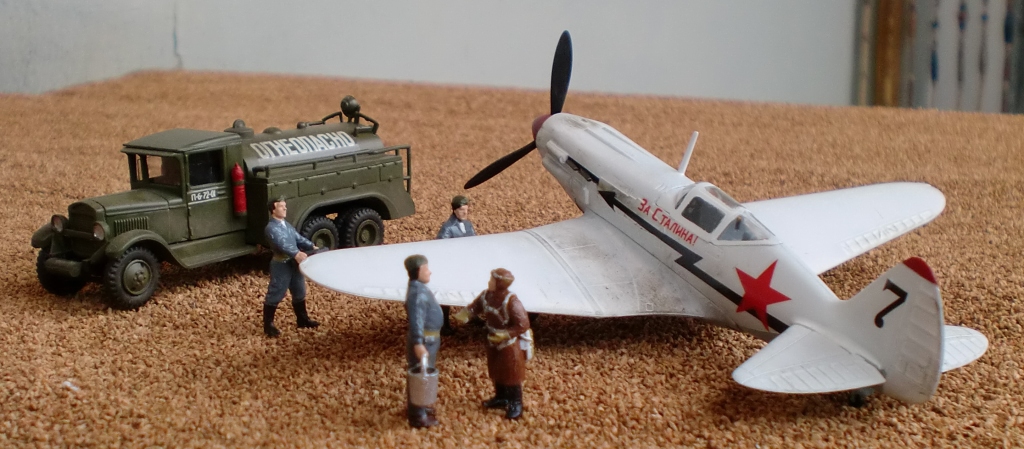
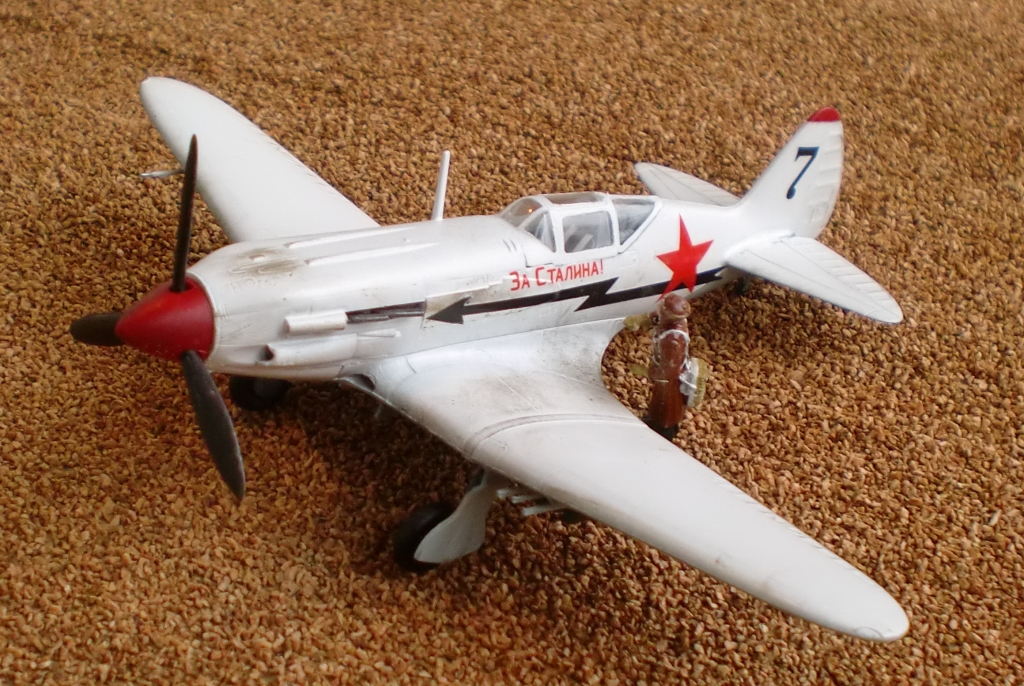
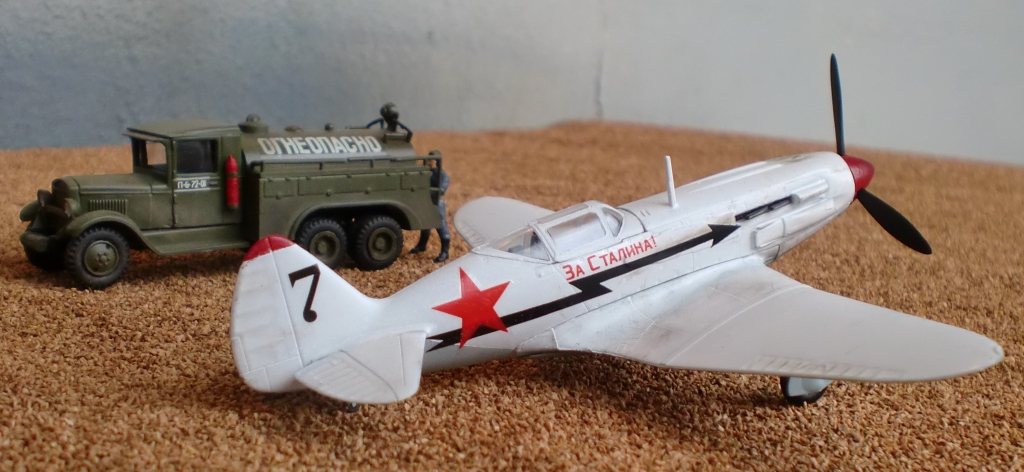
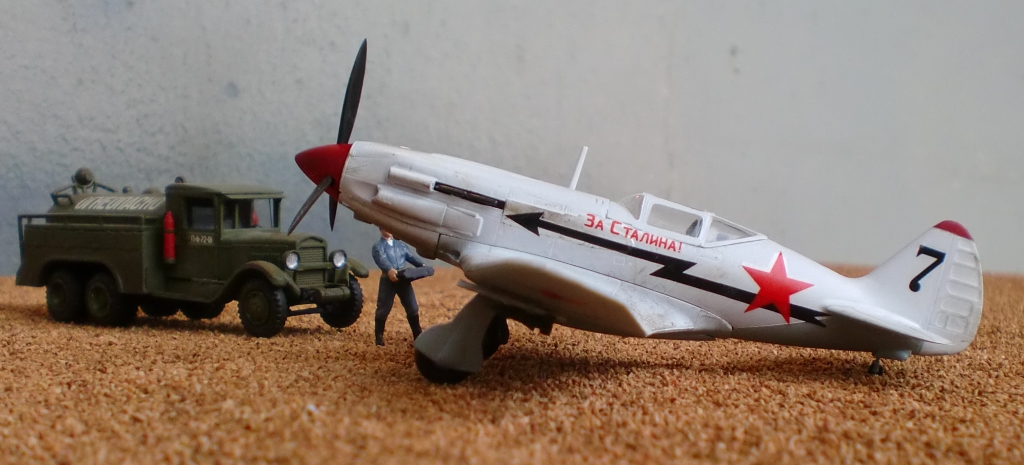
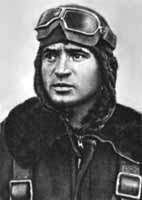
Cpt. Zabolotny
30/12/2018 - Waco CG-4A Assault Glider US Army Air Force, Italeri
One class of military aircraft that was only introduced shortly before WWII and virtually disappeared after was the military cargo/assault glider, the role taken over by the helicopter. The most produced glider of the War was the American Waco CG-4A, with over 14.000 units build.
The Russians were credited with the first operational military glider; however the Germans were the technical forerunners for most of WWII. Sailplanes and gliders were highly developed in Germany, especially as the treaty of Versailles largely prohibited motor flight in Germany in the interwar years.
The feasibilty of this new kind of weapon was demonstrated with success in 1940, when the Germans captured Fort Eben-Emael, a fortress in Belgium that was considered extremly difficult to conquer. But a small fleet of gliders landed on top of the fortress, undetected and surprising for the Belgians, and although the Germans were outnumbered, the victory was theirs. What were the advantages of these engineless gliders ? They could be produced cheaply and in large numbers, and could be used much more precisely compared to Paratroopers. Paratroopers were usually spread over a large area, while gliders had the ability for pin-point landings. Also, they were silent and could reach their target almost undetected, especially at night. And they allowed for transport and deployment of regular infantry and not the highly specialized Paratroopers, and of course cargo. The usual operational mode for gliders was to be towed near the target zone and the released for the rest of the journey. It was definetly not for the faint-hearted ! The unpowered gliders were build largely from wood and fabric, completely unprotected against enemy fire and landings could be quite violent. Although gliders were not specificially designed to be expendable, in most cases it was not practical to retrieve them from the battlefield; they were usually abandoned or destroyed after landing. Especially the Americans with their vast industrial resources considered them expendable and it was much easier just to build a new one.
Gliders varied widely in size; smaller ones like this Waco CG-4A or the very large German gliders: the Me-321 “Gigant”, the largest military glider ever used, could carry a light tank or 200 soldiers. The even bigger prototype Junkers Ju 322 “Mammoth”, essentially a flying wing, had the wingspan of a Boeing 747 but no tow aircraft of the time could securely lift it in the air.
The Waco CG-4A (CG for Cargo Glider) was the standard assault glider of the US Army Air Force in WWII. It saw action in major campaigns like the Invasion of Sicily, Operation Market Garden and the D-Day Normandy Invasion in 1944. It could carry 13 fully equipped soldiers or a Jeep or a howitzer. Vehicles were loaded/unloaded from the front, as the nose could be hinged upward. Tow aircraft were usually C-46 or C-47; they could tow a pair of Wacos. One interesting feature was that an overflying tow aircraft could pick up a CG-4 on the ground and catch it “on the fly”. Most surviving CG-4s were broken up after the war, but some fuselages were converted into mobile home trailers or hunting/fishing lodges.
This small diorama depicts a CG-4A during Operation Overlord (The Allied landings in Normandy, June 1944). It features the black/white “invasion stripes” painted on all allied aircraft to help visual identification. The kit and figures are from Italeri; the only company that ever made a CG-4A in 1/72 scale. The kit is quite old, but has been re-issued many times and is not that bad. Nice options are open doors and a moveable cockpit section; however this looked too fragile for me to build the model that way. And painting many figures is always fun.
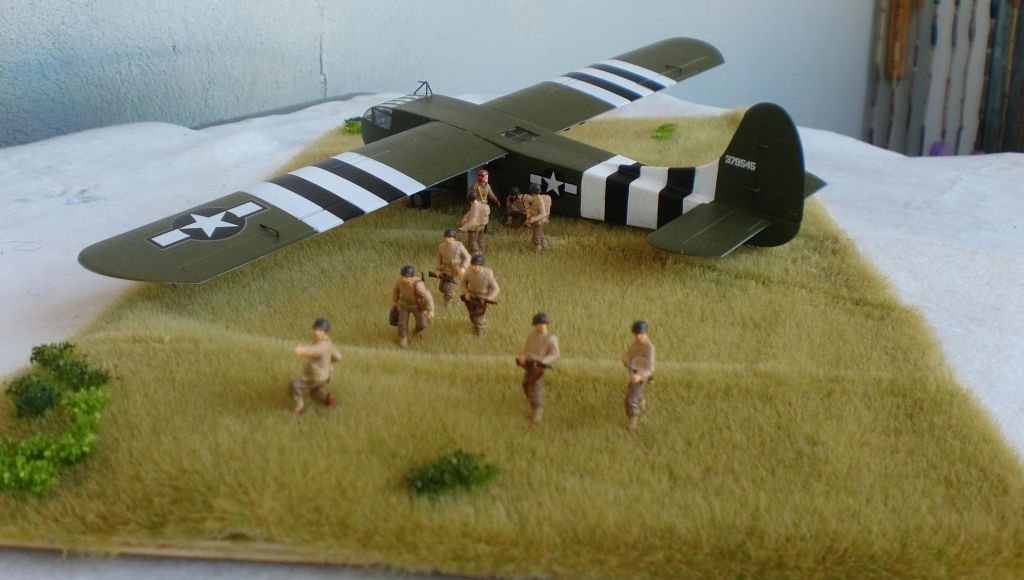
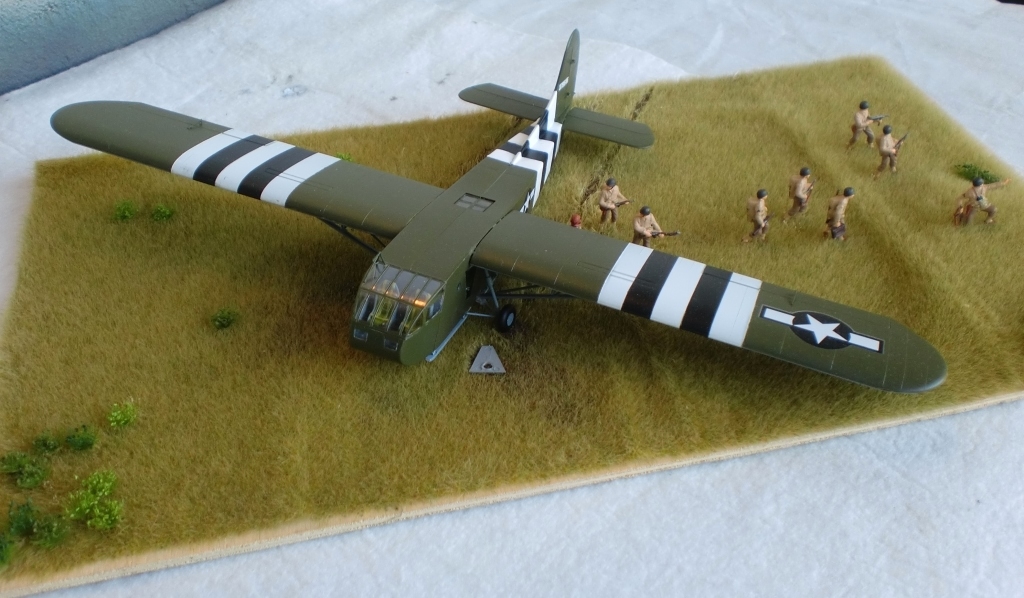
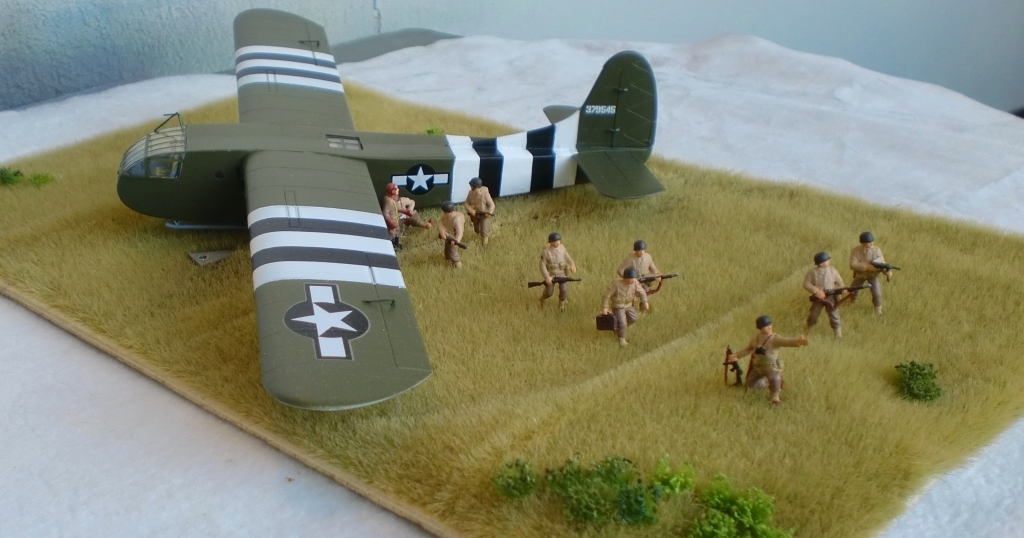
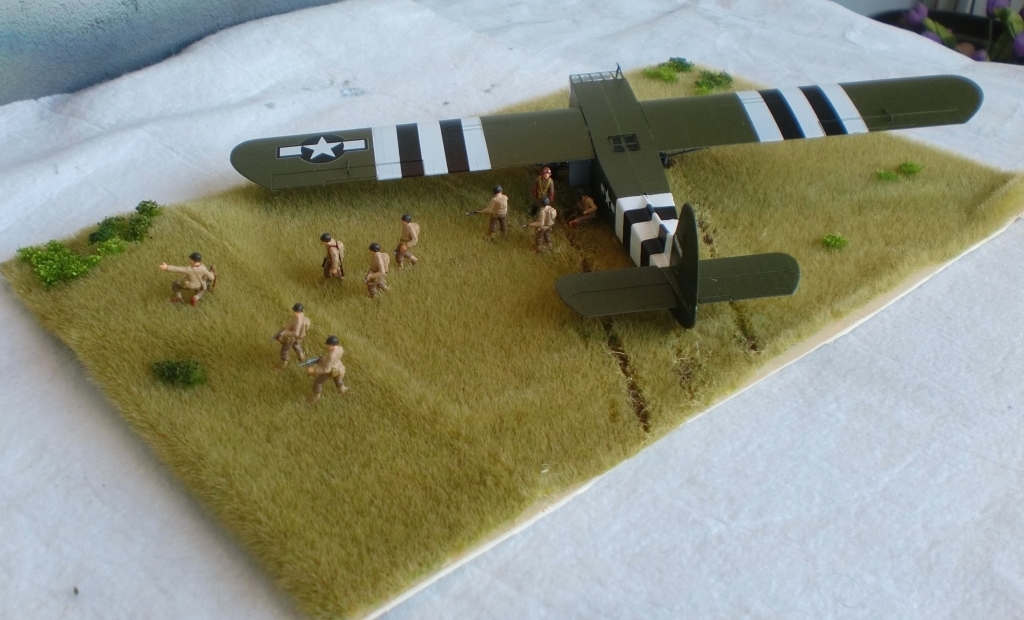
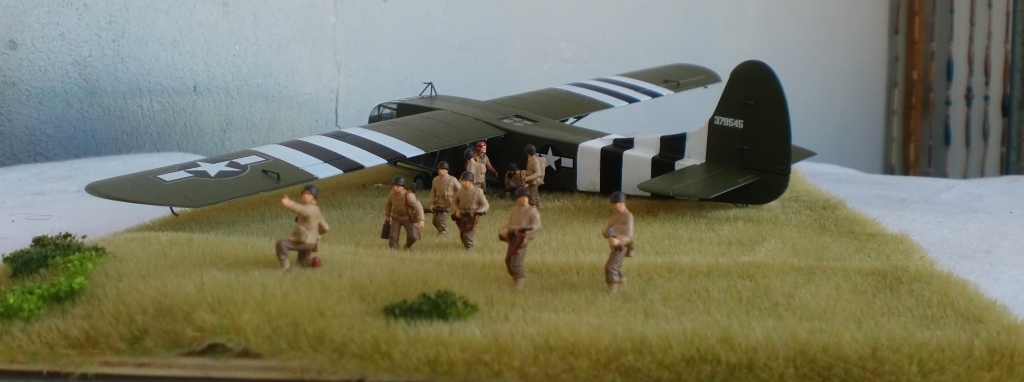
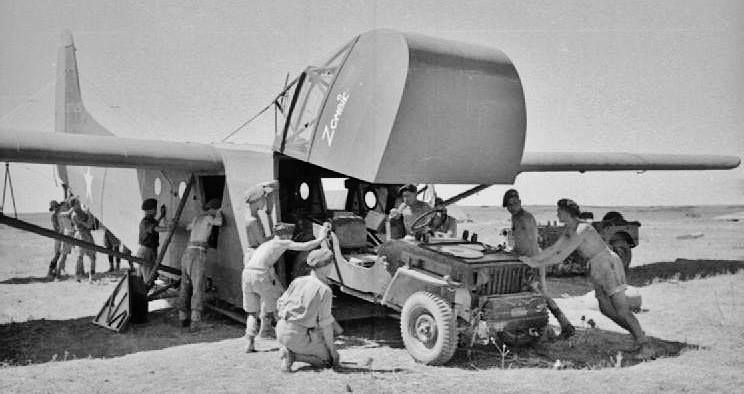
21/12/2018 - Junkers Ju 287 V1 Luftwaffe, Huma Models
Sometimes nicknamed the „Frankenstein plane“ as it was assembled largely from various other aircraft parts (including enemy ones !), the Junkers Ju 287 V1 was the largest and heaviest jet powered aircraft to fly in WWII. Although it did not enter a series production, it is still considered a milestone in aerodynamic design.
In 1943, the German Air Ministry ordered the Junkers aircraft factory to develop a heavy jet-powered bomber that could travel at high subsonic speeds. High Speed and good handling/stall characteristics and also adequate low speed performance was required; quite a challenge in aerodynamic design. High speed subsonic wing designs were largely unresearched at the time. Highly swept wings were initially considered but they had too many disadvantages, like unfavourable stall characteristics: on a conventional swept wing design, the wingtips stall first, compromising aileron controls as they are usually installed on the outer part of the wing. By turning the wing 180 degrees and creating a forward swept wing, the stall begins at the wing root, making the aircraft more controllable at low speeds and high angles of attack. Also, on a more practical level, forward swept wings allowed for a rearward location of the main wing spar, therefore leading for a more efficent interior space.
Nevertheless, the Junkers engineers expected correctly that the forward swept wing design also had quite a few disavantages, like asymetric flexing of the wings in turns; this was especially a problem as todays strong and light materials like carbon composite were not avaiable at the time.
Therefore, and to ease construction and to speed up assembly, it was decided that the very first prototype should be a testbed and proof-of-concept for the forward swept wing design. So the aircraft was build from various other aircraft components: the cockpit and fuselage were taken from a Heinkel He 177 bomber, the tail from a Ju 388, the main gears of a Ju 352, and the front gears from captured B-24 Liberator bombers ! As the engineers did not want to compromise the structural integrity of the experimental wings, fixed landing gears were installed and the wheels covered by large aerodynamic fairings, giving the plane a somewhat archaic look. The front fairings were removed on later test flights. A remote controlled film camera was installed on the tail section to observe airflow over the wings; white woollen strings were glued on the fuselage and wings as an optical aid. To give additional thrust to the 20 ton+ aircraft, three RATO (Rocked assisted take off) units were installed under the jet engines. The rocket engines burned during take-off and ascent and were dropped off after usage, and returned to the ground on parachutes and could be reused. A brake parachute was installed to slow down the heavy plane after landing. As an interesting fact, the Ju 287 V1 maybe the fastest aircraft ever flown with fixed landing gears.
As can be seen on the drawing below, the final Ju 287 design would have looked quite different, including a completely new cockpit section, fuselage and tail and wings with six jet engines bundled as three-unit combined sets.
The first flight of the V1 prototype took place on August 8, 1944, followed by another 15-20 test flights (exact number is unknown). No major incidents did happen, although there were expected problems with the wings and engines, but the general concept looked feasible. But with the worsening war situation in Germany, the entire programme was suddenly cancelled by the Air Ministry in the fall of 1944, and the V2 and V3 prototypes were not completed, and the now engineless V1 put into storage at the Junkers factory. However, in the spring of 1945, work on the V3 prototype (which already looked very similar to the final design) was continued but not finished before the end of the war. The V1 and V2 prototypes were blown up before the Allied troops arrived, but the largely intact V3 prototype was taken by the Red Army back to Russia – along with most of the machinery and tooling of the Junkers factory, and engineers and designers. There, the plane was later developed by the German staff into the Junkers EF 131 (which looked almost identical to the proposed serial production version of the Ju 287) and test flown in 1946/1947.
The only plastic scale model kit of this strange plane was made by German company HUMA in the late 1990s. A short run kit, it is nonetheless of good quality and quite a fun kit. It has a few errors, like an incorrectly shaped rear fuselage and too small RATO units, but one has to live with that. Not a big deal. This weird plane looks great in any collection, I think.
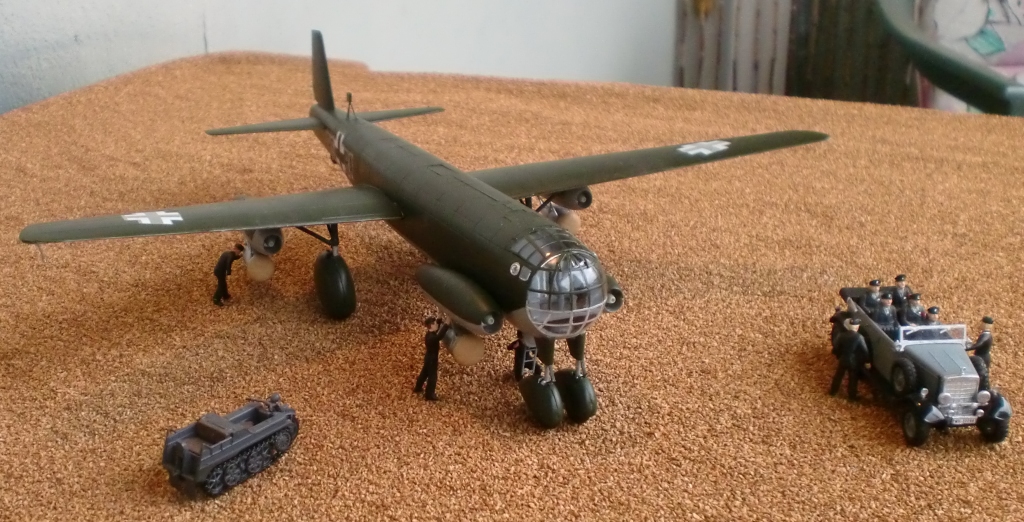
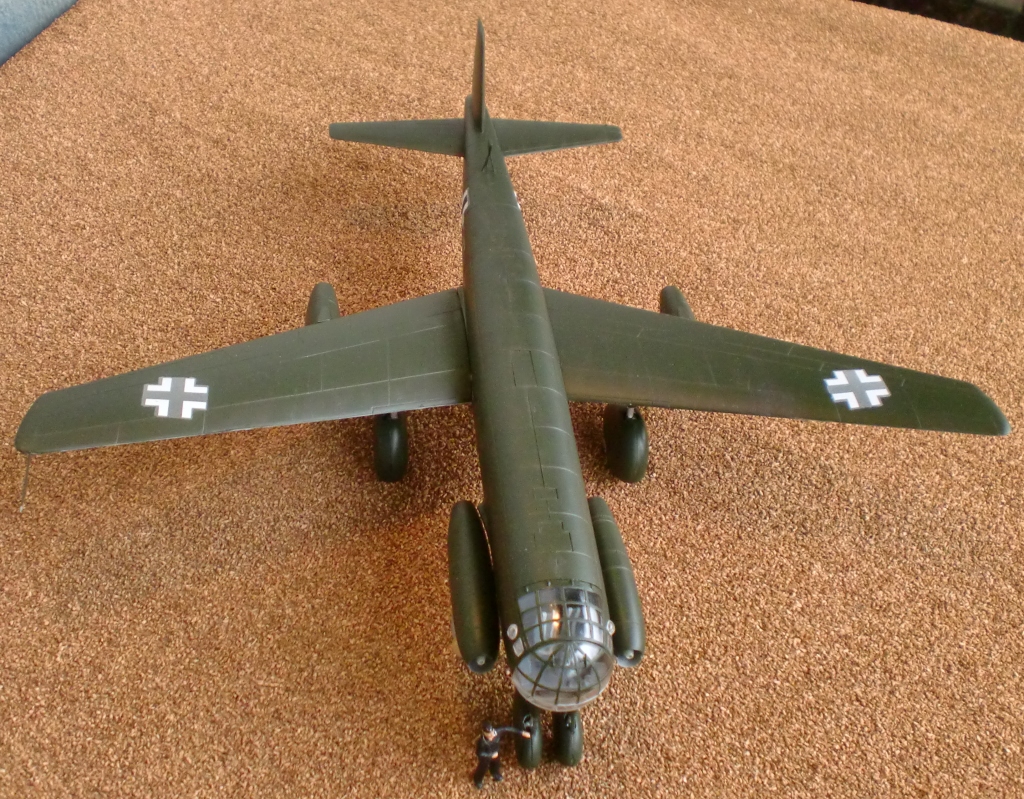
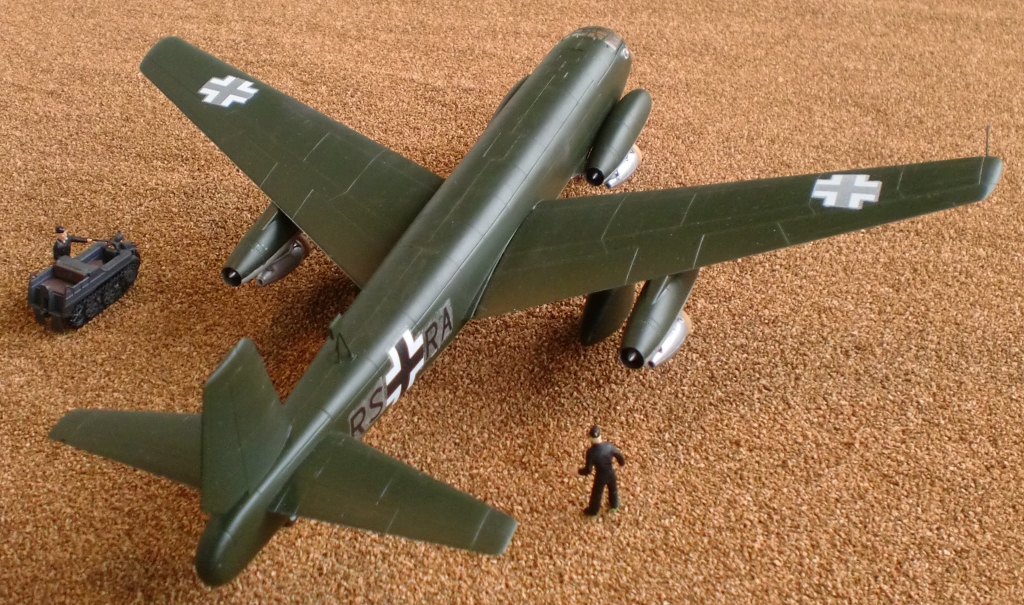
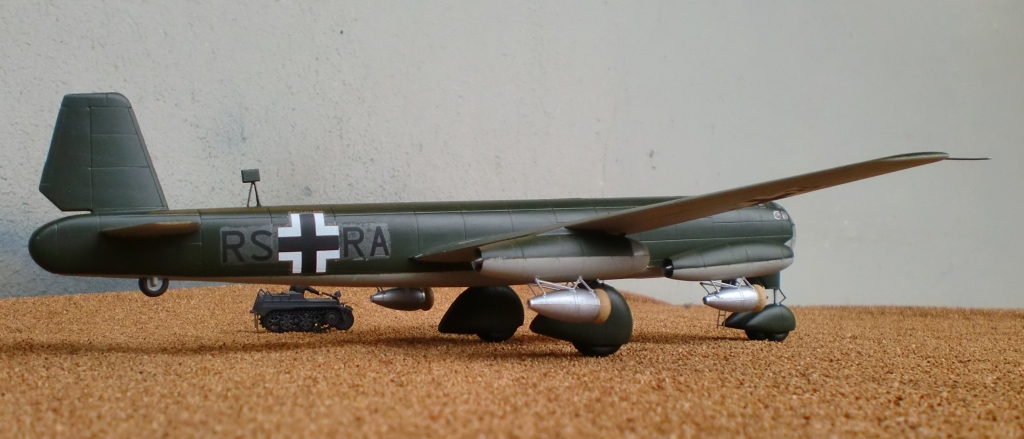
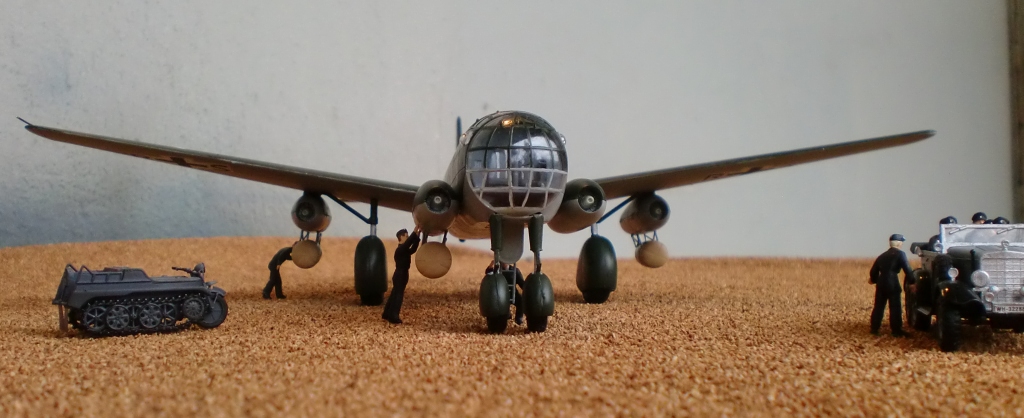
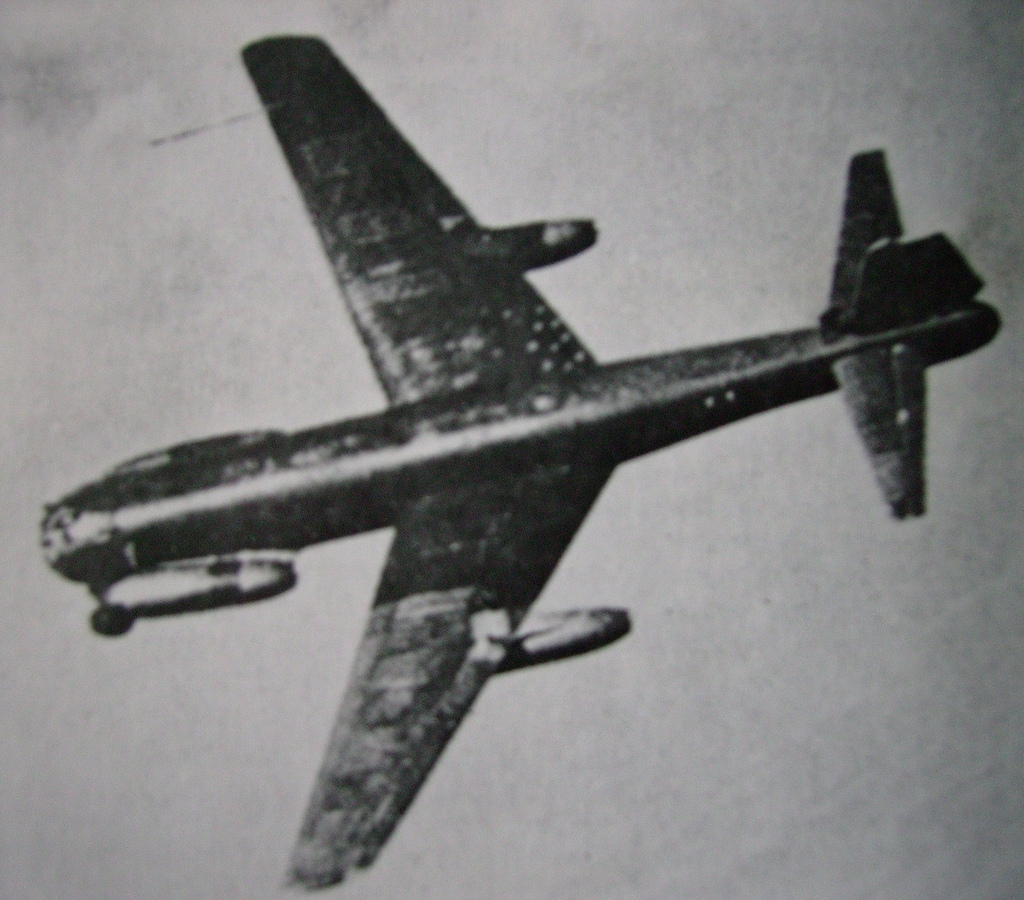
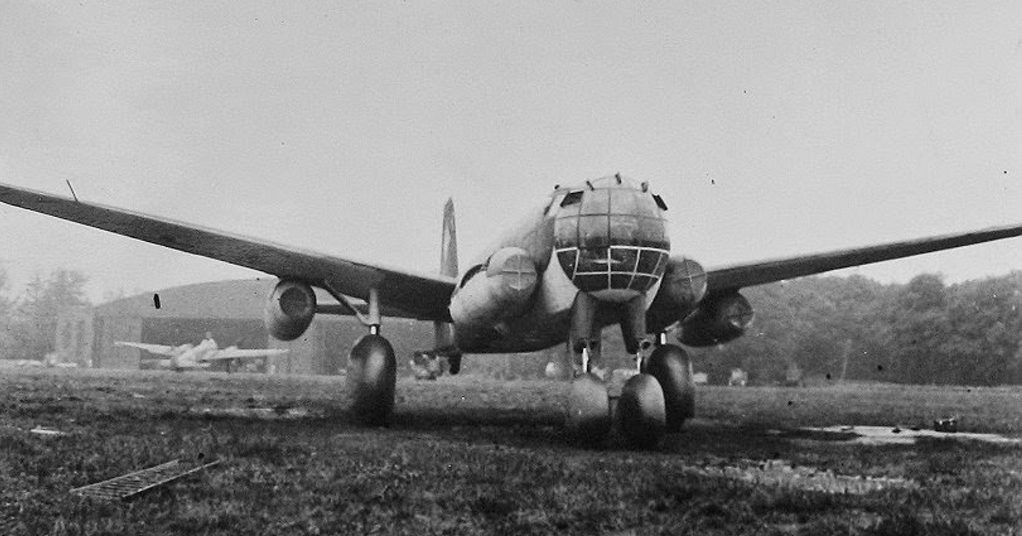
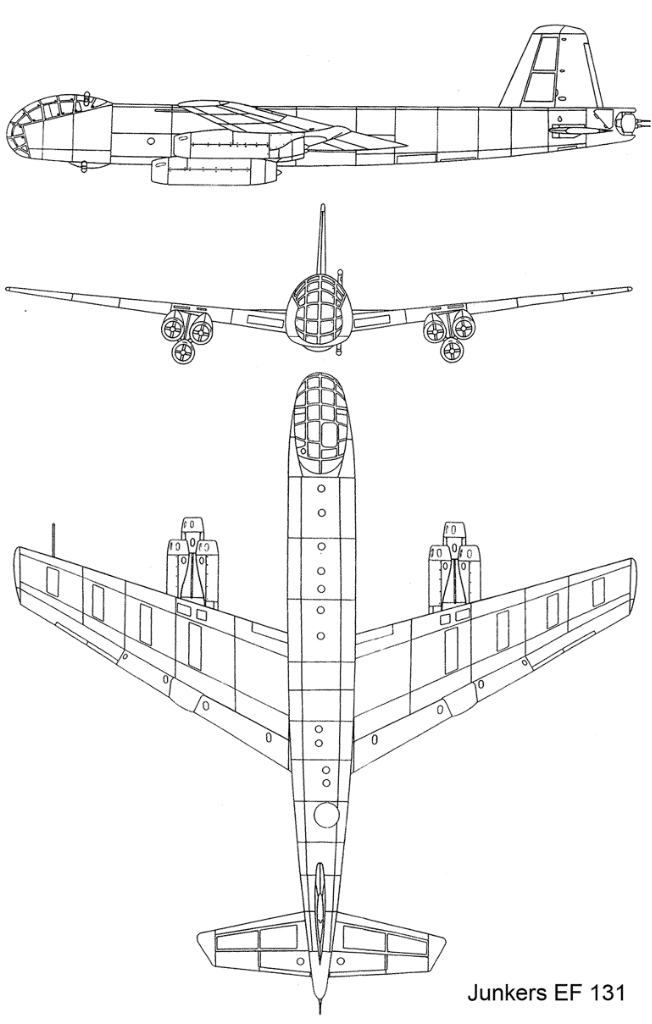
21/11/2018 - Bell P-59A Airacomet US Army Air Force, Special Hobby
America´s first jet aircraft remains a rather obscure subject, even in scale modeling. The Bell P-59 Airacomet was not a success, but has an interesting history worth exploring.
Starting in early 1941, with the UK already at war and the USA still uninvolved, technology exchange was agreed upon the U.S. and British governments. The Americans were especially interested in the British Power Jets W1 engine, the jet engine that powered the first jet aircraft of the Royal Air Force, the Gloster Whittle (already shown here). Engines, documentation and technicians were transported to the United States, and General Electric was contracted to build a modified, americanized version of this engine, named the GE I-A. Bell Aircraft, who had production facilities near to GE, was hired to build the airframe for the first jet fighter aircraft of the US Army Air Force. Secrecy, as always these days, was a top priority. Therefore it was not an unusual sight to see the aircraft parked or towed outside with the engine intakes covered and a fake wood propeller mounted at the front !
The first prototype was ready by fall 1942 and the first flight was performed on October 1st, 1942. Bell´s design was a rather conservative one, the major difference to the German or British jet counterparts were the engines embedded in the fuselage near the aircraft centerline, while the Me 262 and the Gloster Meteor had wing-installed engine nacelles.
It was predicted the Airacomet could reach speeds up to 500 mph, however the greatest topspeed ever achieved was around 410 mph, which was not better compared to the top-rated piston aircraft of the USAAF at the time, the P-38, P-47 or P-51. Even worse, the aircraft was too heavy, sluggish and an unstable gun platform; the major problems were the underpowered engines (they had 40% less thrust compared to those of the Me 262) and the unsophisticated airframe design. In arranged mock dogfights against the P-38 or P-47, the Airacomet always lost. Consequently, the Air Force cancelled the ongoing construction contract with Bell, so only 66 aircraft (P-59A and B variants) were build. Focus was now set on the Lockheed P-80 Shooting Star, a new advanced design that was vastly superior. The P-59 never saw any combat and remained stateside, assigned to the 412th Fighter group, were it was used mainly as a pilot trainer for jet conversion. By 1949, all remaining Airacomet were retired. Today, six Airacomets have survived, and the one located at the Planes of Fame Museum in Chino/CA is being restored to airworthy condition. When finished, it would be the oldest flying jet aircraft in the world.
This P-59A, “Smokey Stover” (named after a cartoon character) was the first jet aircraft to visit Alaska in late 1944, where it underwent testing in freezing weather conditions.
An obscure aircraft, so naturally it had to be a Czech Short Run kit, this time from Special Hobby, released in the early 2000s. It was a little tricky as expected, but generally OK. I have seen worse, but as usual I´m not always happy with the outcome, although the model itself is accurate enough. Maybe I´m not patient enough to fiddle with all the cleaning and corrections required for these kind of kits. This little diorama is supplemented by a CCKW 353 fuel truck, one of the standard truck designs of the US Army in WWII. A nice kit from Hasegawa, and the resin figures are from CMK.
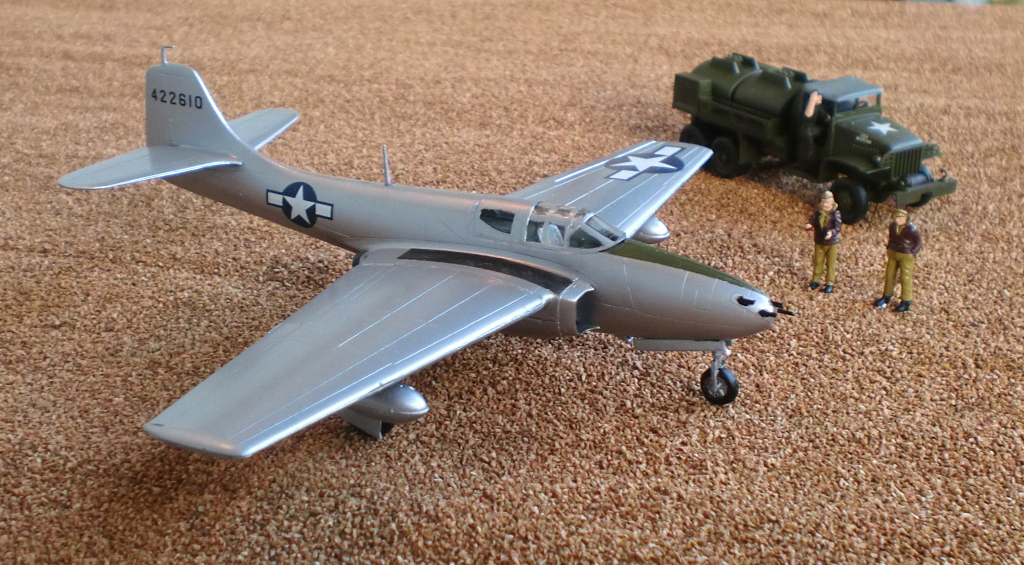
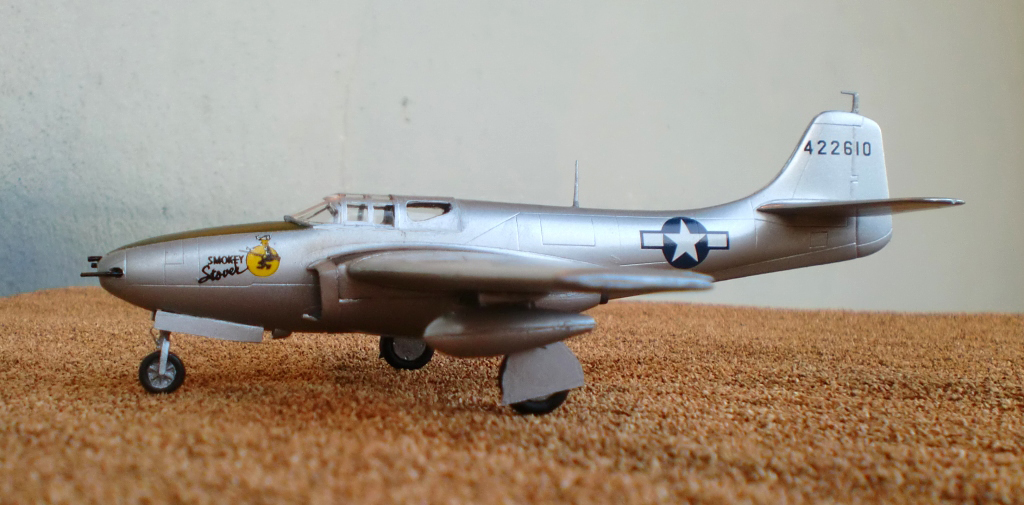
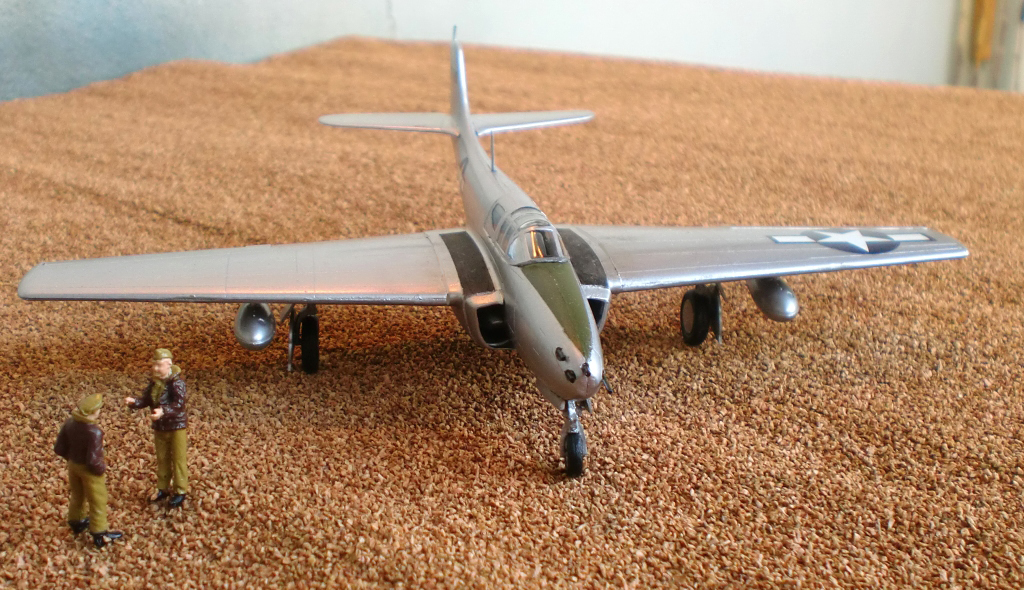
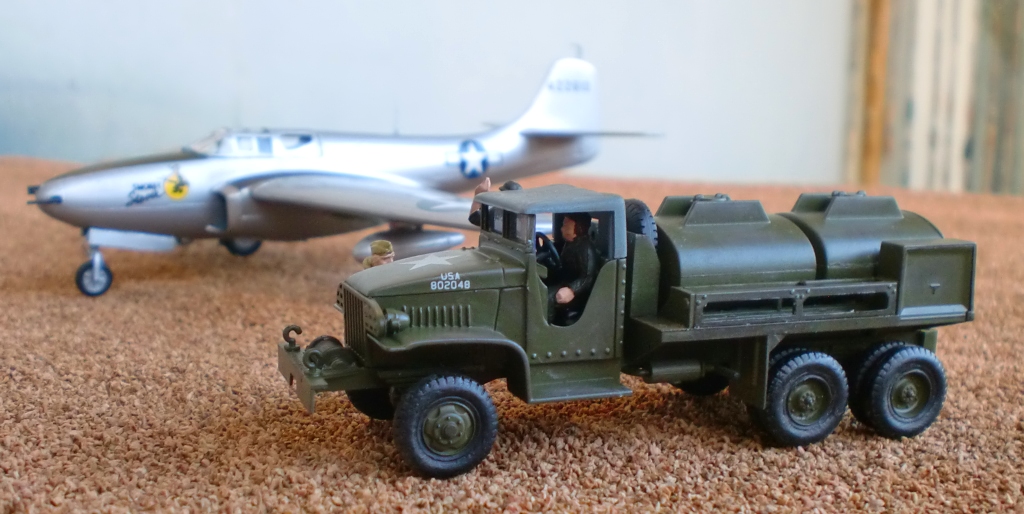
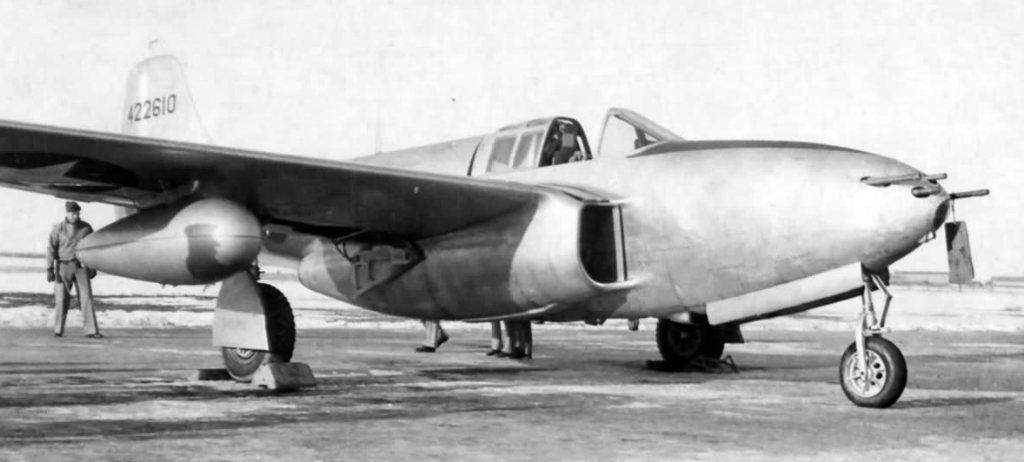
21/10/2018 - Nakajima B5N2 "Kate" Imperial Japanese Navy, Hasegawa
Together with the Mitsubishi Zero fighter and the Aichi D3A “Val” dive bomber, the Nakajima B5N “Kate” torpedo bomber was one of the three primary attack aircraft of the Imperial Japanese Navy in the early stages of the Pacific War, and was employed in large numbers in the Pearl Harbor raid.
First flown in 1937, the B5N was the contemporary Japanese counterpart to the Allied carrier-based torpedo planes of the time, namely the Douglas TBD Devastator of the US Navy and the Fairey Swordfish of the Royal Navy. But the “Kate” was the most capable of these designs as it was much faster and could carry more payload. However, by 1941 the design was becoming obsolete, but it remained in front line service for another 2-3 years. Designed as a carried-based torpedo bomber, it was also used occasionally as a land-based bomber, where a 800kg bomb replaced the Type 91 aerial torpedo. It was this torpedo type that was modified for use in shallow water, which made it possible to deploy it in Pearl Harbor. Although over 1100 “Kates” were produced (the Allies applied female code names to Japanese bombers and male to fighters) no single complete airframe is preserved. When seen flying in war movies, modified T-6 Texan trainers are used as stand-ins; the similarity is quite amazing.
This particular B5N2 “Kate” was part of the Aircraft carrier Akagi flying group and is seen here as it appeared in the spring of 1942. It was commanded by Captain Mitsuo Fuchida, one of the most prominent Japanese aviators in the early phase of the war. He was leading the first attack wave of the Pearl Harbor attack and it was him who send the famous code words “Tora ! Tora ! Tora!” (complete surprise achieved) back to the Japanese fleet, and made him a national hero back in Japan. The aircraft seen here is the same one he commanded in Pearl Harbor; however it looked badly weathered only a few months later – this is not a deliberate camouflage scheme. Japanese paint at the time was of low quality and usually peeled of in large pieces in the salt-waterly oceanic air. Fuchida was injured onboard the aircraft carrier Akagi during the Battle of Midway and worked as a non-flying staff officer until the end of the war. In the early 1950s, he moved to the USA, converted to Christianity and wrote books about his time in the Navy and traveled the USA and Europe to tell his story. He died in 1976.
This kit is from Hasegawa and it´s a very old tooling so it required quite a bit of cleaning, which is unusual for Hasegawa kits but no big hassle. Fit and details are quite good. Decals are from the kit. The paint chipping effect is achieved by applying Revell Color-Stop liquid masking tape. Looks quite OK and it is actually not overdone, the real aircraft was really heavy weathered.
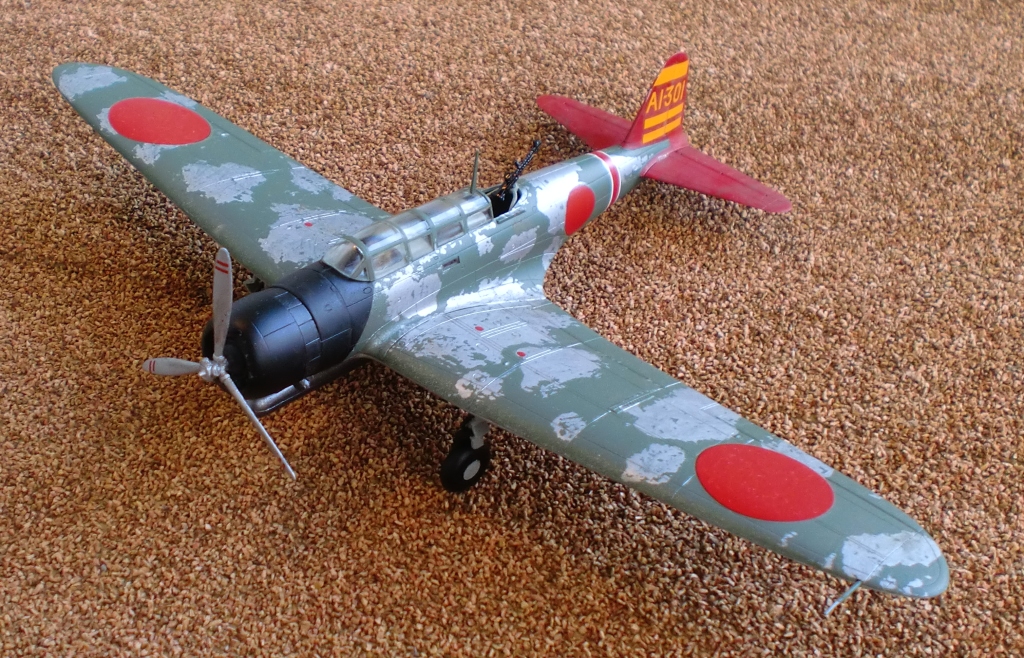
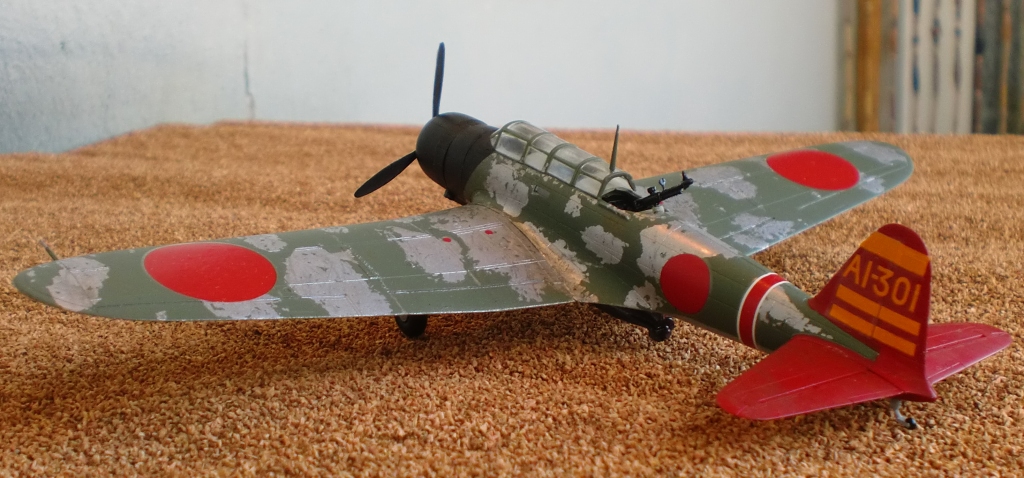
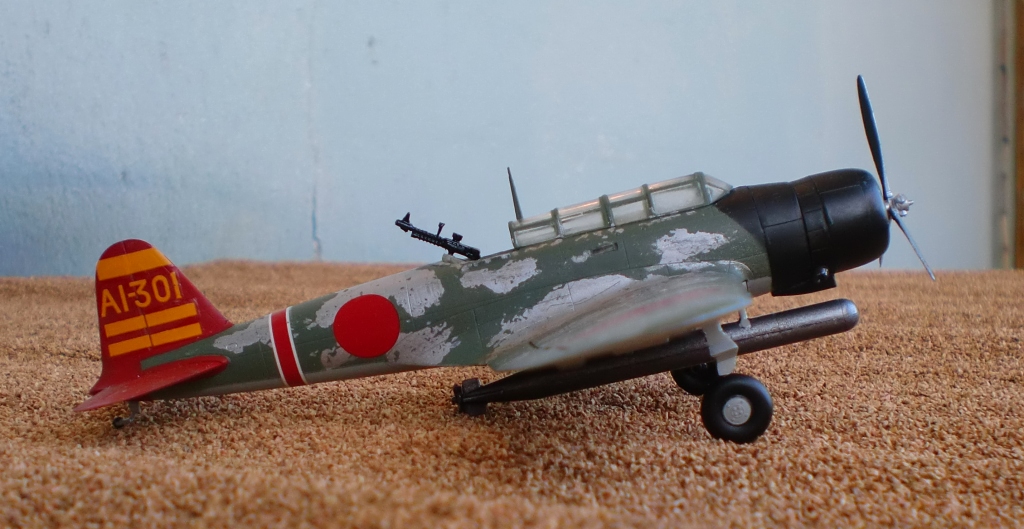
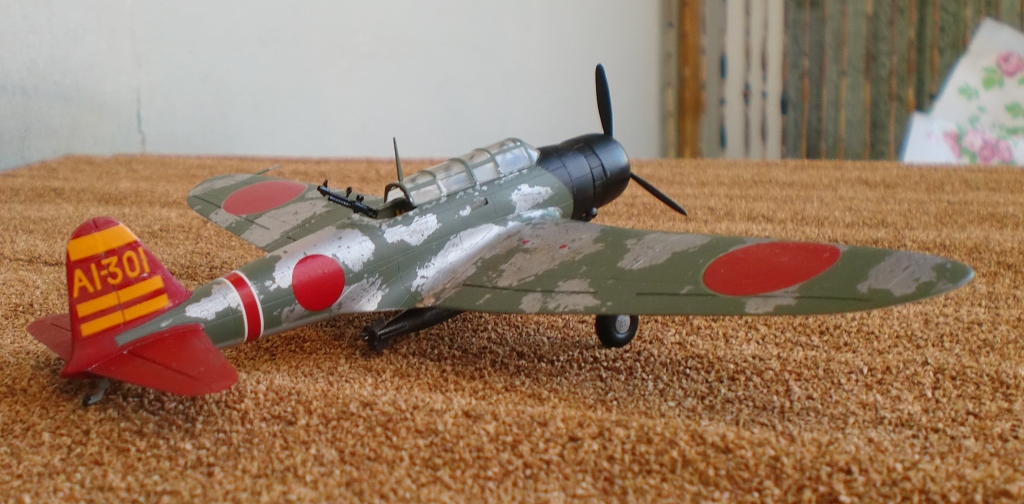
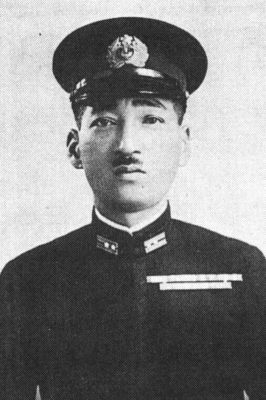
16/09/2018 - Focke-Achgelis Fa 223 "Drache" Luftwaffe, Huma Models
A challenging build but I´m happy to have finished it, as this is hard to get kit these days: I present the Focke-Achgelis Fa 223 „Drache“ (Dragon), the first helicopter to enter series production.
During WWII, Germany and the United States were the leading countries in development of this new technology, but helicopters only saw limited use during the war, with the breakthrough coming shortly after it. In Germany, Henrich Focke of Focke-Wulf, who was ousted by the Nazis from his own company due to political reasons, teamed up with aviator Gerd Achgelis in 1936 to form a new company specialized in Helicopter development. Focke-Achgelis responded to the request for a multi-purpose helicopter by the German Air Ministry, and the first prototype took the air on August 3, 1940.
As a multi-purpose helicopter, the Fa 223 was designed for cargo/sky crane operations, personel/medical transport, and search & rescue duties. Compared to other helicopters of that time period, the “Dragon” was a large aircraft: it featured twin booms with two large counter-rotating rotors, therefore eliminating torque and the need for a tail rotor; power was provided by a 1000hp BMW radial engine positioned behind the cargo/passenger cabin, with power transmitted by drive shafts to the rotors. The twin-rotor design was chosen by Focke-Achgelis as it was felt to have easier controls and required less complicated pilot training. Ultimatively, the main rotor/tail rotor design first introduced by Sikorsky with the R-4 in 1942 became the standard design for most helicopters to this day.
Nevertheless, the performance of the “Dragon”, operated by a 2-man crew (pilot and observer/gunner) was impressive: it could reach up to 23.000 ft and carry over 1000 kg of payload at 8000 ft, this included external cargo lifted by a winch. Cars, airplane fuselages and light artillery guns could be carried this way. This made the Fa 223 ideal for mountain warfare, and during tests it proved excellent in this role. It was also the first helicopter used for search & rescue missions, and if one of the required Fa 223s had not broke down prior to the mission, would have been the aircraft carrying Benito Mussolini home after his rescue from prison in the famous Grand Sasso raid in 1943.
However, in context, the helicopter played only a very minor role in WWII. Like the USA, the German Military command could not really make their mind about this new technology; it was generally regarded as not very important and there was no priority in development. And although the Fa 223 could claim to be the first helicopter that entered series production, it was not really that much ! As the productions facilities were constantly bombed by the Allies, production plants had to move regularly within Germany and France; only 20 units were produced, and a few of them were bombed before they ever became operational. After the war, three more units were produced in France by Sud-Est and two by the former Avia plant in Czechoslovakia. No “Dragon” has survived in museums.
In this little diorama scene, one of the prototypes is inspected by high-ranking army officials. They sit in a Mercedes-Benz G4/W31. The G4/W31 was a heavy three-axle offroad staff/command car manufactured for the German Military. As it was too expensive for general army use, only 57 units were produced. A luxury vehicle, the G4 was often used for parades and inspections and was one of Hitler´s favourite cars. He regulary used an armored version for public parades. Three original cars survive to this day, with one located in Hollywood, used as a prop for TV and movie productions.
The Fa 223 kit is from the now defunct short run kit maker Huma from Germany. As the mould & company is gone, it is harder to get these days. A challenging build, it is not as fizzly as some of the Czech Short run kits, because all parts are plastic and not PE – even the more delicate ones like the rigging. The quality is quite outstanding, I have never seen to finely produced tiny plastic parts. I put some weight in it but as expected it was not enough, so I glued this “tailsitter” to a diorama plate…the Mercedes-Benz G4/W31 and the figures are from Hasegawa. Nice little car.
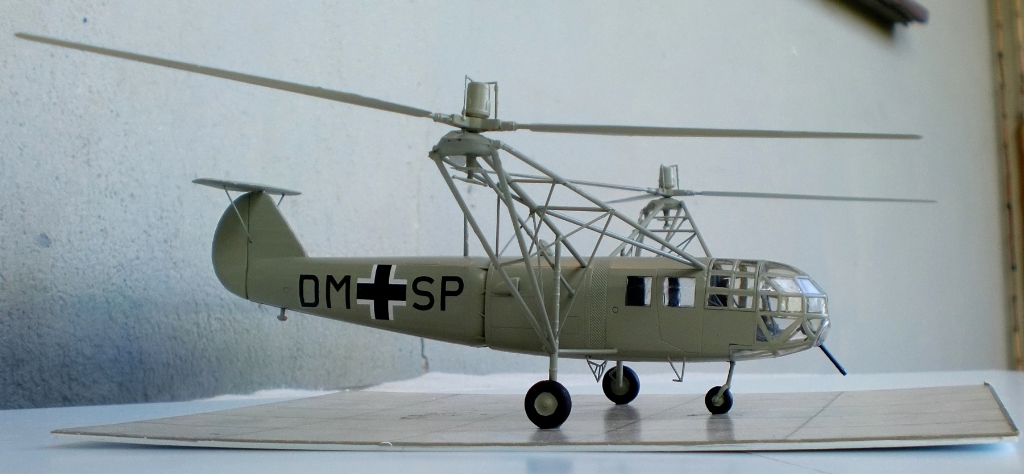
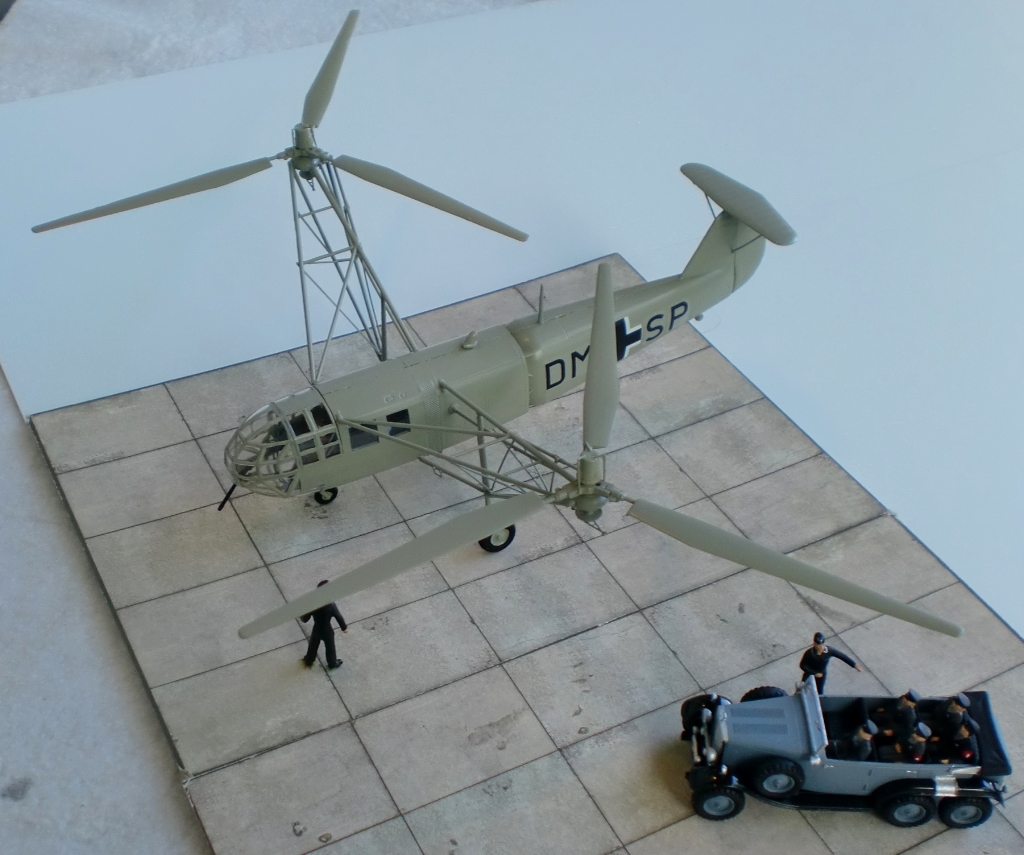
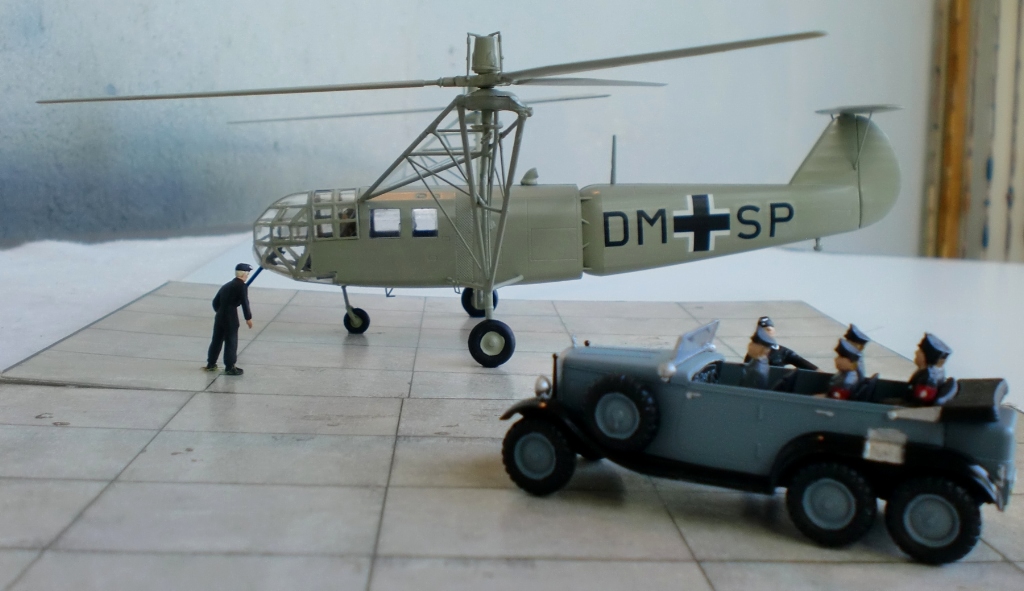
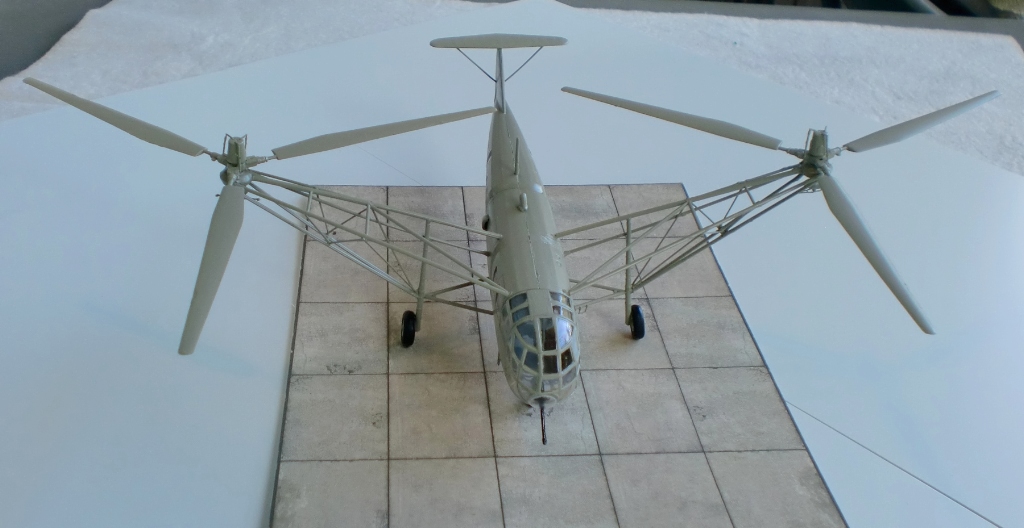
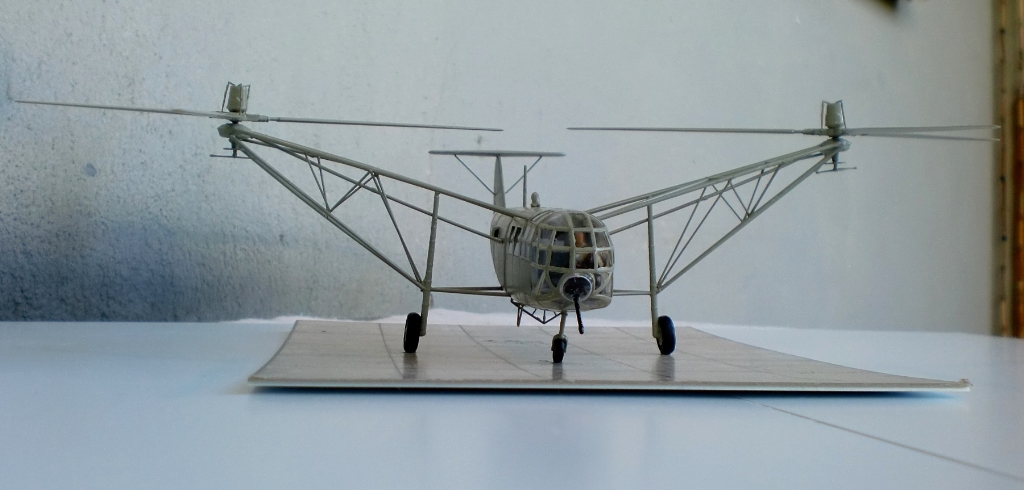
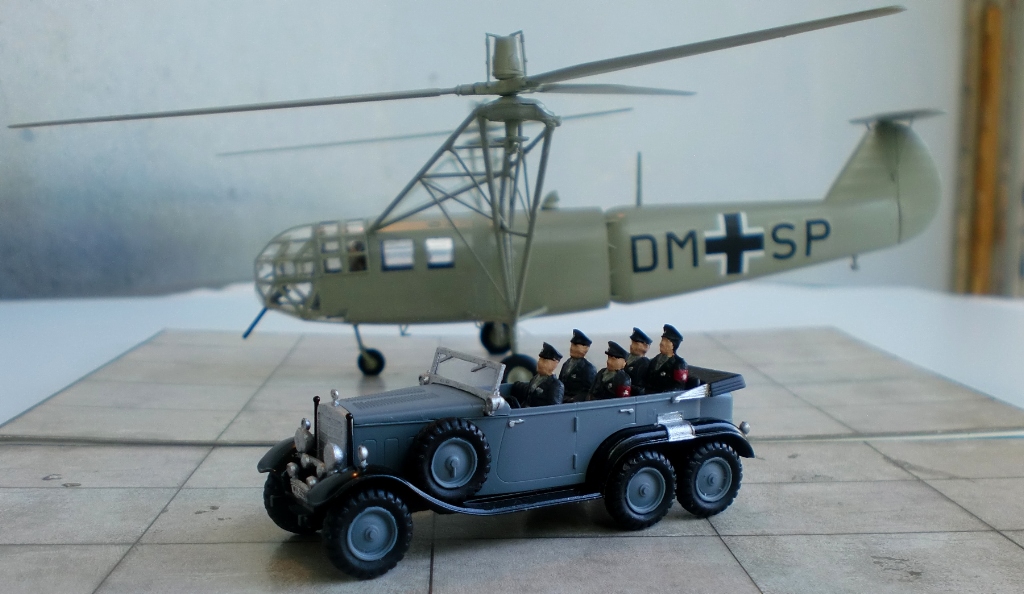
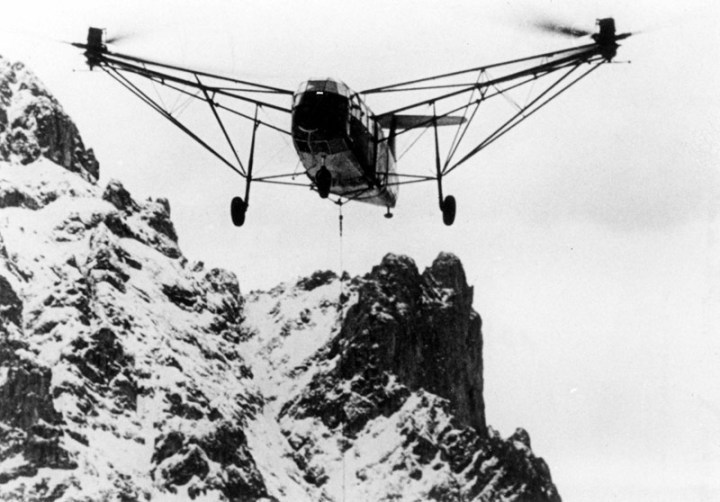
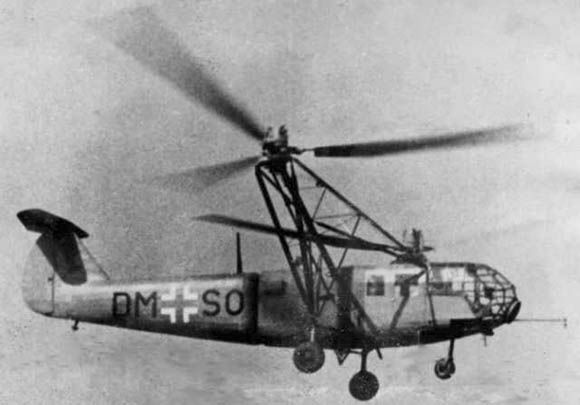
15/08/2018 - Republic P-47D Thunderbolt US Army Air Force, Tamiya
Nicknamed the „Jug“ (as the profile was similar to a milk jug of the time), the Republic P-47 Thunderbolt was the largest and heaviest single engine fighter airplane of WWII, and also one of the fastest. Originally designed a a high-altitude interceptor, it later had a successful career as a ground attack and fighter-bomber aircraft, especially in the European theater.
The P-47 Thunderbolt was a development of the P-43 Lancer, a pre-war fighter design of Republic Aircraft. Conceived as a high performance, high altitude interceptor, the P-47 was equipped with the powerful P&W R2800 Radial engine and a GE turbosupercharger that was installed behind the cockpit; the complex piping required space, resulting in the large fuselage of the P-47. Despite it´s weight, the aircraft had excellent high altitude performance and ample speed; performance however suffered at lower altitudes, climb rate was insufficient and it was easily outturned by the earlier Bf109 and Fw190 variants of the Luftwaffe – it was way too heavy for some maneuvers. However, American pilots found out that the “Jug” was rugged and had a important life insurance – nothing could outdive a Thunderbolt, and uncontrolled dives could sometimes accelerate the aircraft near the sound barrier.
The P-47D was the main production model, and like the P-51 Mustang, the “Razorback” early version with a raised fuselage was later replaced by the “bubble” canopy version for better vision. Limited range for bomber escort missions was a problem, and the Thunderbolt was later replaced by the Mustang in this role. As a fighter-bomber, the Thunderbolt fared much better. It could carry heavy payloads (bombs, rockets, Bazookas) etc.), was rugged and reliable and offered enough performance and arnament to defend itself against fighters – it was surely the ultimative ground attack aircraft in WWII, outperforming the purpose-build Soviet Il-2. So it was no surprise the Fairchild Republic A-10 ground attack jet of the 1970s was named “Thunderbolt II”.
With it´s large cowling , the P-47 was perfect for nose art; and some of the most impressive nose art could be found on P-47s operating in Europe. Usually members of the ground staff were responsible for the paintings and they took great pride in their work. Nose art was usually related to a specific pilot, often depicting girlfriends or wifes. This P-47D Razorback “Triss” of the 56th fighter group, 62nd Fighter Sqd was based in Boxted, England in February 1944. It was flown by 1st Lt. Anthony R. Carcione. He scored 2 ½ victories and was killed when his aircraft crashed in Germany on March 8th, 1944.
This kit is from Tamiya, and as expected it falls together almost automatically, details and tooling are perfect as it can be. This is fun scale modeling. Decals are from Kits World and they are perfect, too.
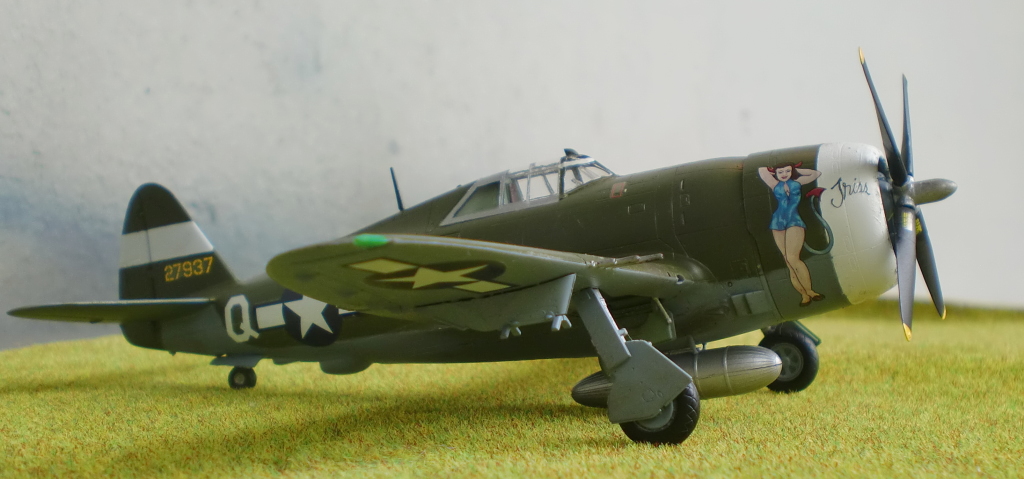
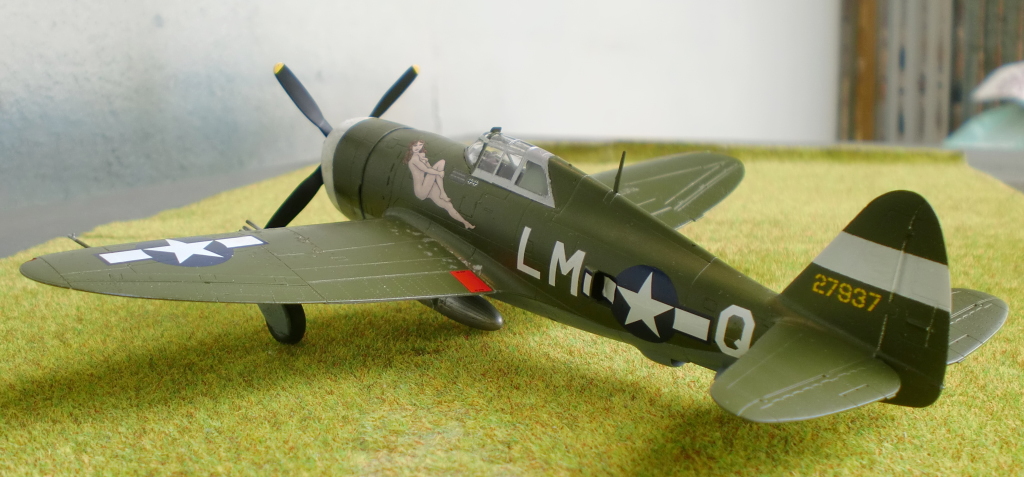
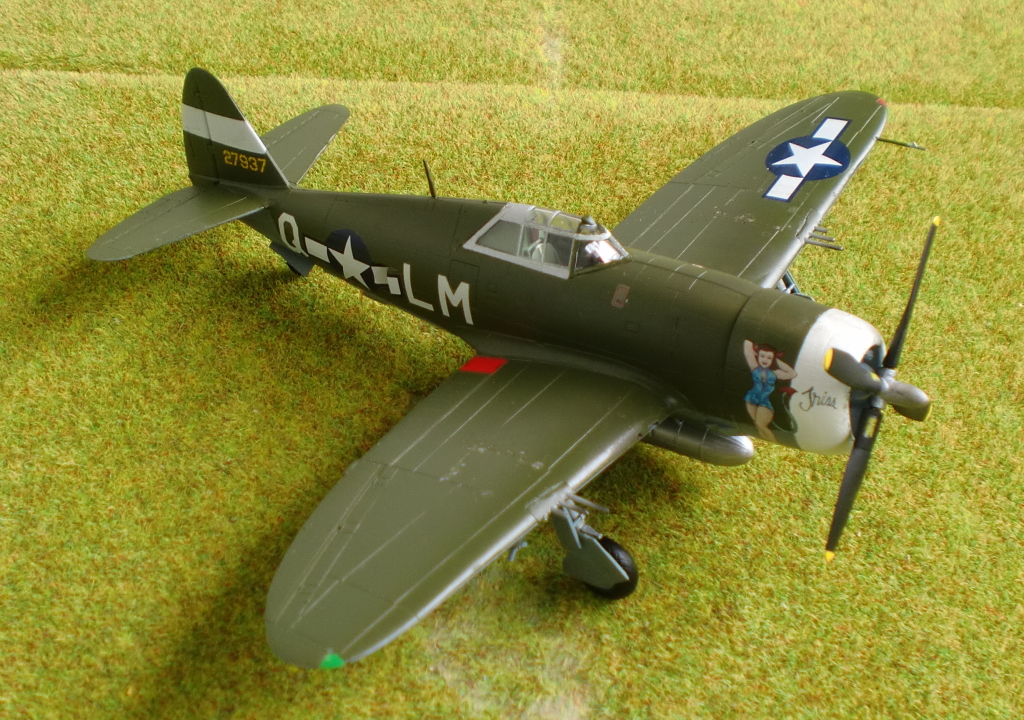
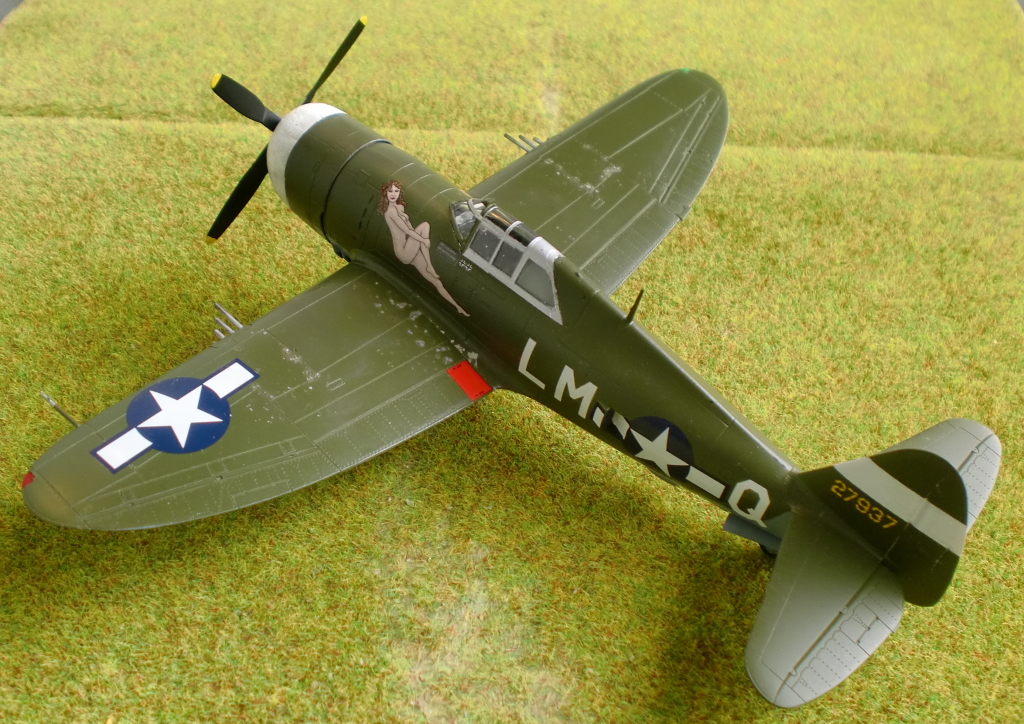
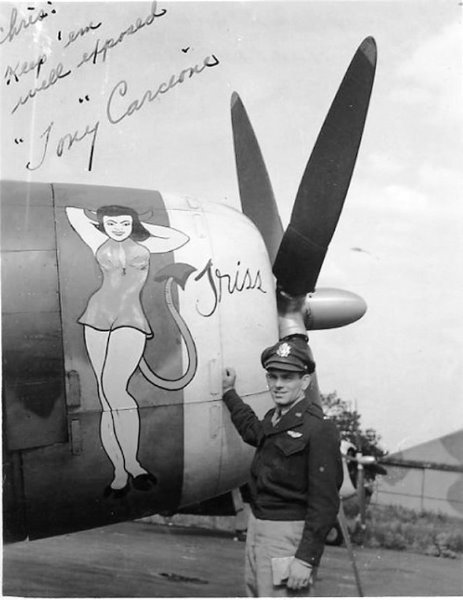
22/07/2018 - Tupolev SB-2M-100A Soviet Air Force, Ark Models
For quite some time the Tupolev SB was known as the world´s fastest bomber aircraft – so fast it could outrun all the fighter aircraft of the time. One of the most important Soviet aircraft designs of the 1930s, the SB (Skorostnoi Bombardirovschik, High Speed Bomber) played an important role well into WWII.
First flown in 1934, the SB was a significant step for the Russian aviation industry, and -along with the Polikarpov I-16 fighter- was one of the most advanced aircraft of it´s time. Featuring an all-metal construction with retractable gears, stressed skin construction and smooth, flush rivet surfaces, the SB was aerodynamically efficent and could reach top speeds up to 280mph, very fast for the mid-1930s. However, Russian productions plants were slow to adapt the new manufacturing techniques needed for this modern design, and the so-called “Stalin purges” beginning in 1935 brought aircraft design almost to a standstill, and robbed the Soviet aircraft industry of important manpower and resources.
Nevertheless, the first operational missions of the SB in the Spanish civil war were quite successful. Flying for the pro-socialist Republican government forces and manned by Russian crews, the SB (nicknamed the “Katyusha” in Spain) was almost unstoppable at first, as it was too fast for the fighter airplanes of the time, which were still mostly biplanes. This changed when the Messerschmitt Bf 109 was introduced by the Legion Condor in 1937, and SB losses were quite high after that. Now design flaws became more evident, as a lack of armor and crew protection.
This was rectified in later versions, and the SB remained the main medium bomber aircraft in the Soviet Air Force well into the outbreak of WWII. In the meantime, the SB received a few updates, first a new three-blade propeller and later, with the M-103 version, completely re-designed engine nacelles with much better aerodynamics. However, by 1941 the entire design was obsolete and an easy prey for the invading Germans. Removed from front line service in 1943, some SB´s remained in service as transport and utility aircraft. There even was a civil freight/passenger version operated by Aeroflot. Although over 6600 units were produced, only two complete aircraft are known to have survived to this day, the one shown below is displayed in the Monino aviation museum near Moscow.
This SB 2M-100A kit , “Red 10”, has three-blade propellers and an unpainted metal finish, like many SB´s before the outbreak of WWII . It was operated in the Baltic fleet around 1941.
This kit is another ancient one from Frog Models, now distributed by Ark Models. Some old Frog moulds are still acceptable and in rather good shape, but this one is not. It had a lot of flash and blemishes and required quite some work. Details are sparse but the finished model looks like a SB – the only alternative in 1/72 scale is a newer kit by ICM Models, but this was too fiddly for me – ICM kits have great details but they are way to overcomplicated. Decals are from Printscale.
I created a little airfield scene here. Figures are from Russian company Zvedza, quite detailed and the ZIS-6 fuel truck is a kit from Belarus maker PST. The ZIS-6 is a three-axle variation of the ZIS-5, one of the most popular Soviet Truck designs from the 1930s to 1950s. The airfield refueller version is called BZ-35 and was the first fuel truck to have a front-mounted exhaust system to reduce fire hazard, a new invention at the time. This little kit was quite nice for a short-run kit.




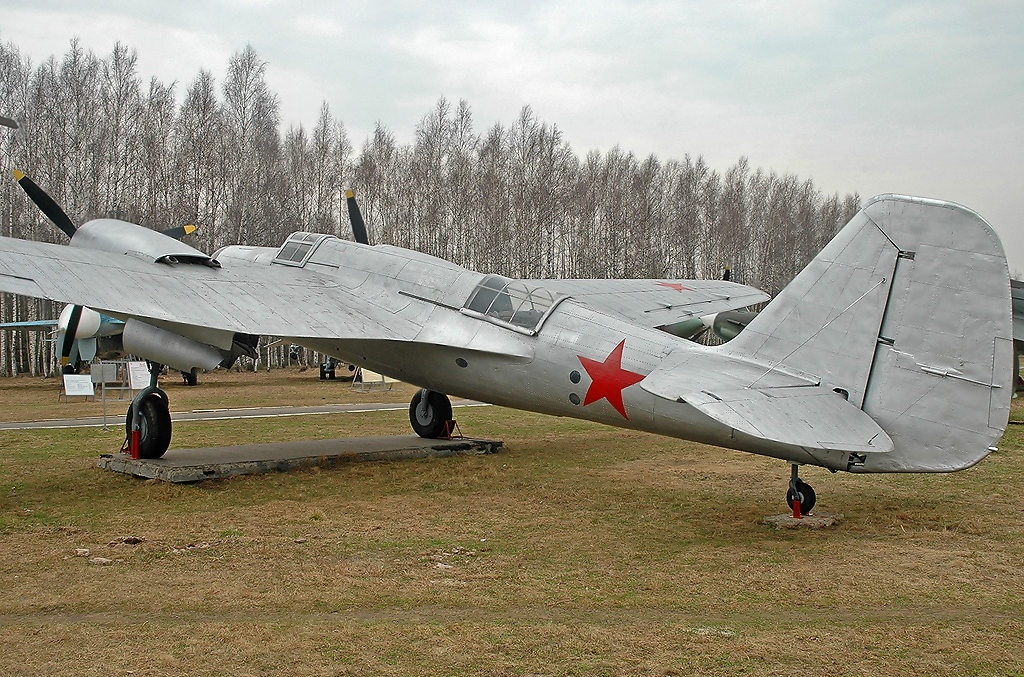
06/06/2018 - PZL 23A Karas Polish Air Force, IBG Models
Another relatively unknown design –but not unpopular as a modeling subject - is the PZL 23 Karas, a Polish light bomber and reconnaissance aircraft designed in the early 1930s.
Polish Air Doctrine at the time had a strong preference for multi-role and armed reconnaissance aircraft, and the Karas was able to fullfill this role quite succesfull. First flown in 1934, the Karas was a relatively modern aircraft for its time, with a full-metal design, a crew of three, 700kg of bomb payload and three machine guns, one in the nose, one in the rear upper station and one underbelly. The first production version however, the PZL 23A , was deemed unsatisfactory because of its unreliable and weak engine (a license-build British Bristol Pegasus engine) and was soon relegated to secondary service and Air Force flying schools. The B-Version was introduced later and 210 models were build (compared to 40 aircraft of the A-Version)
But as it was at the time, aircraft technology was moving fast and the Karas was obsolete at the outbreak of WWII, and was an easy prey for the invading Luftwaffe. Losses were heavy but one single Karas attacked a factory in Germany on September 2th 1939, making this the first bombing raid over German soil in WWII. A few Karas were evacuated to Romania where they were integrated into the Romanian Air Force; an export version, the PZL 43, was delivered to the Bulgarian Air Force. No aircraft has survived to this day.
This PZL 23A Nr. 8 was flown by the Polish Air Force College in Deblin, September 1939.
There a quite a few kits of this aircraft. A very old one and crude one from the Eastern Bloc dating to the 1950s, and a mould from Heller released in the 1970s, and this brand new one by IBG Models of Poland, first offered in 2017. I was quite surprised by it, and it is not a short run kit ! Details are extremely well, the aircraft has a fully detailed interior, and everything fits almost perfectly. This is up to Tamiya quality and despite the small little details (and PE parts) it builds up well. Very recommended. IBG has primarly done kits of military trucks in 1/72, if they continue this quality with their aircraft kits they could make an impression for sure.
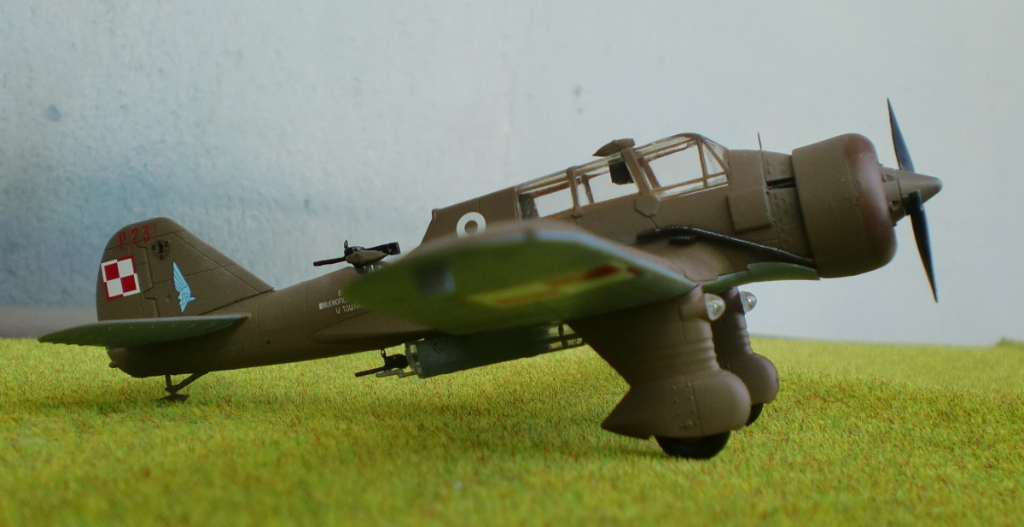
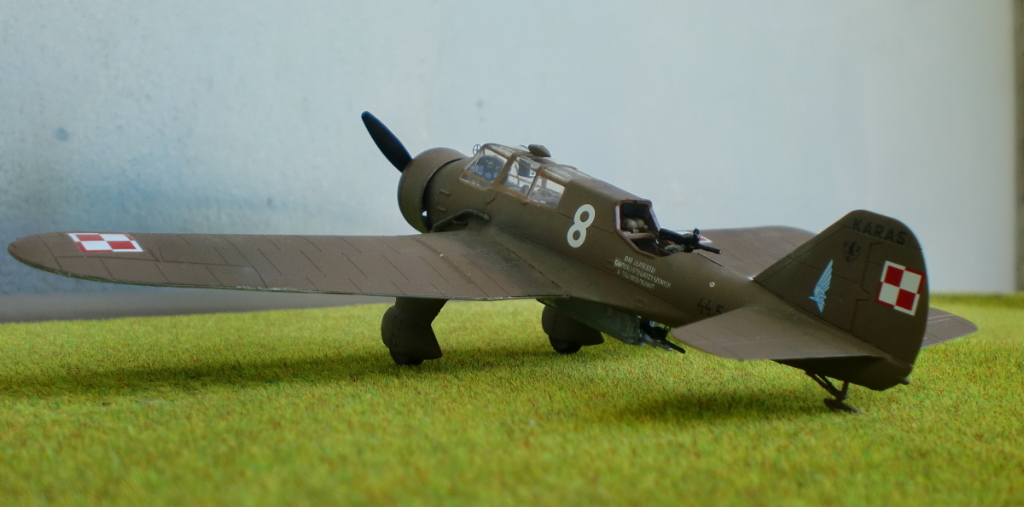
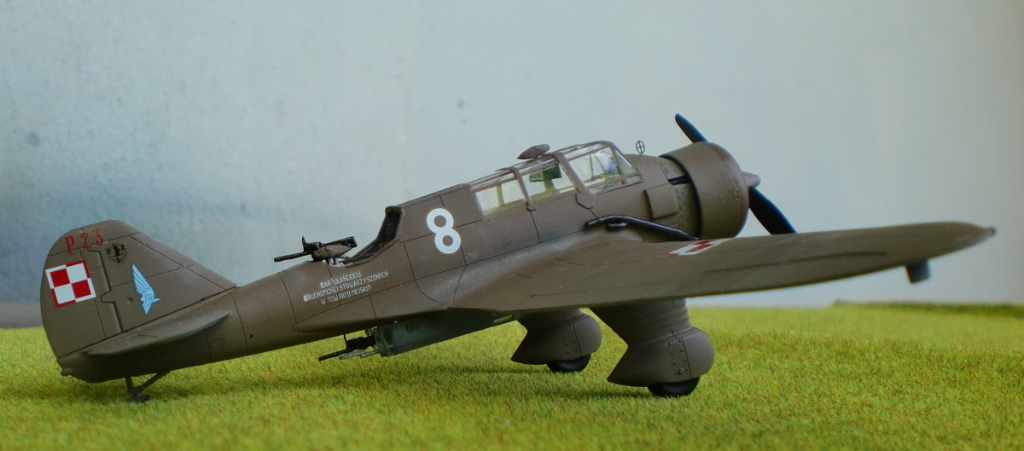

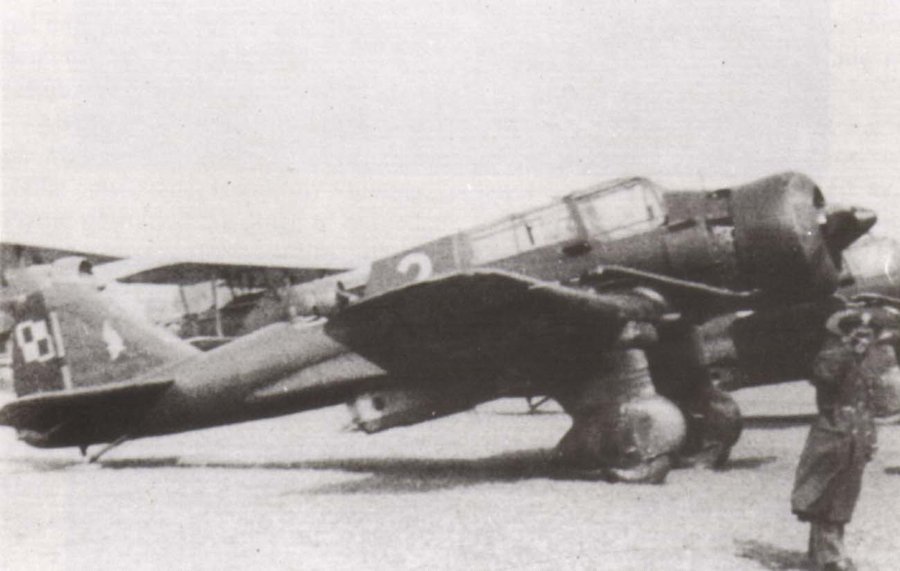
08/05/2018 - Gloster E28/39 Royal Air Force, Ark Models
The oldest surviving jet aircraft in the world is the Gloster E28/39 of the
Royal Air Force. It first flew on May 15th, 1941 and is now displayed in the
Science Museum in London. Although the Caproni Campini N.1 (presented earlier in
this thread) displayed in Rome is almost one year older, it is technically not a
pure jet aircraft, but a hybrid called a “motorjet”.
Research in turbojet propulsion was already done in the 1920s, but no practical
use could be achieved then. The jet engine as we know it today has two fathers:
Frank Whittle, a Royal Air Force engineer, and Hans von Ohain, a German
Physicist. Both researched this new technology independently in the 1930s; and
both had in common that their respective governments were indifferent at first
about this new, exotic form of propulsion. Whittle founded his own company,
Power Jets Ltd, to promote his idea and to attract interested partners in the
British aviation industry. Lack of funding and government support did cost him a
few years of development and in the end the technological edge against the
Germans. Von Ohain was hired by Aircraft manufacturer Ernst Heinkel who always
had an interest in high-speed planes. Frank Whittle is credited to have build
the first operational turbine engine in the world, while Von Ohain designed the
first airworthy jet engine, that powered the Heinkel He 178 on it´s first flight
dated August 27th, 1939 – over 1 ½ years before the maiden flight of the Gloster
E28/39. This event, of course, was unknown for the British or the rest of the
world – jet engine research & aircraft development was top secret at the time
and almost all information about it emerged only after the war, when Whittle &
Von Ohain met each other and became good friends for the rest of their lives.
Whittle´s first airworthy jet engine, the Power Jets W.1, was ready in 1940 and
the Gloster Aircraft Company was selected to build a proof-of-concept aircraft,
the E28/39 (sometimes also called the Gloster “Pioneer” or Gloster “Whittle”).
Two experimental aircraft, Serial numbers W4041 and W4046 were build. It was a
simple but functional design and test pilot Gerry Sayer took it into the air on
May 15th, 1941, the first flight of a British jet plane. The second jet, W4046,
did not have a long career and was lost due to aileron failure in flight; the
pilot was able to bail out. During 1943, the remaining E28/39 was handed to the
Royal Aircraft Establishment (a government-owned research instute) based at
Farnborough airfield, where it received a new camouflage scheme and a few
aerodynamic modifications. Primarly used as an engine testbed, the “Pioneer” was
finally retired in February 1945, after about 120 flights, and returned to
Gloster, where the aircraft was refurbished and given to the Science Museum
London in 1946 where it remains ever since. The E28/39 paved the way for the
Gloster Meteor, the first operational jet fighter of the RAF.
The E28/39 W4041 is seen here as it appeared during 1941/42. It wears a Dark
Earth/Dark Green camouflage with yellow undersides typical for RAF prototype and
trainer aircraft of the era. Of interest is the marking “P” for prototype and
the serial number W4041/G. The “/G” means that this aircraft had to be observed
by at least one armed guard at all times when it was on the ground. It was all
about secrecy then – and the very existence of this aircraft was acknowlegded by
the government only in 1944 – three years after the first flight !
This kit from Russian maker Ark Models is the old Frog Models tooling, now over
50 years old. Therefore it is a basic as it can get, but this is typical for
kits this old. What is annoying though that it is horribly inaccurate in terms
of dimensions. This tooling is based on old incorrect Gloster drawings. The
fuselage looks a bit bloated, and it really is ! Apparently the fuselage
dimensions of the kit are more like 1:63 scale, while the wings are correct 1:72
scale. Of course nothing can be really done to correct this. The only
alternative is a long-gone Czech short run kit or a very expensive and tricky
short run kit from Australia – no thanks, not for me this time. The Ark/Frog
model is accompanied by a few Airfix RAF figures and a diecast Bedford Tanker
from Hobbymaster.
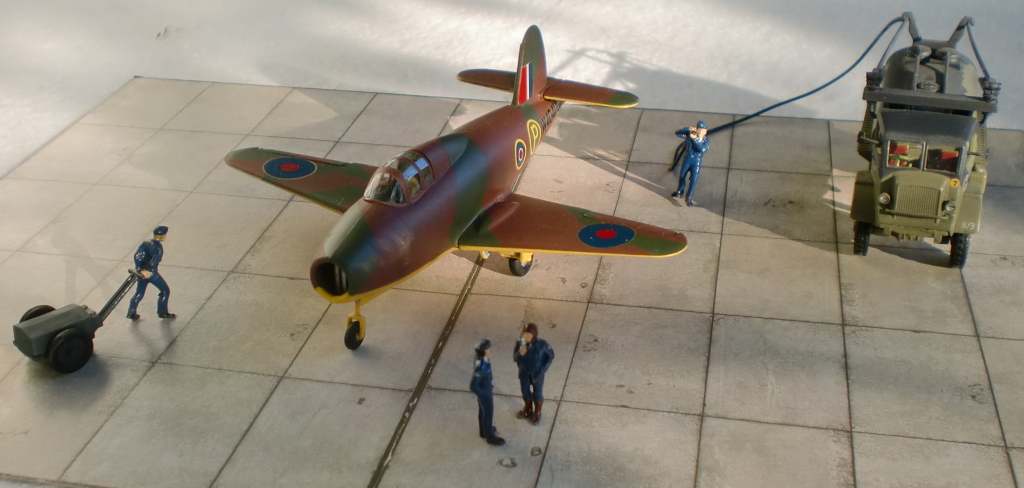
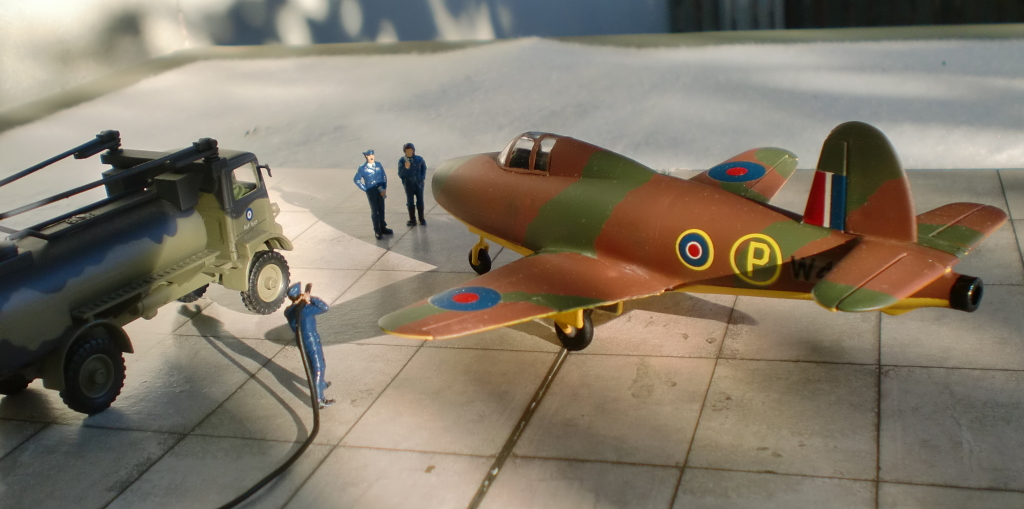
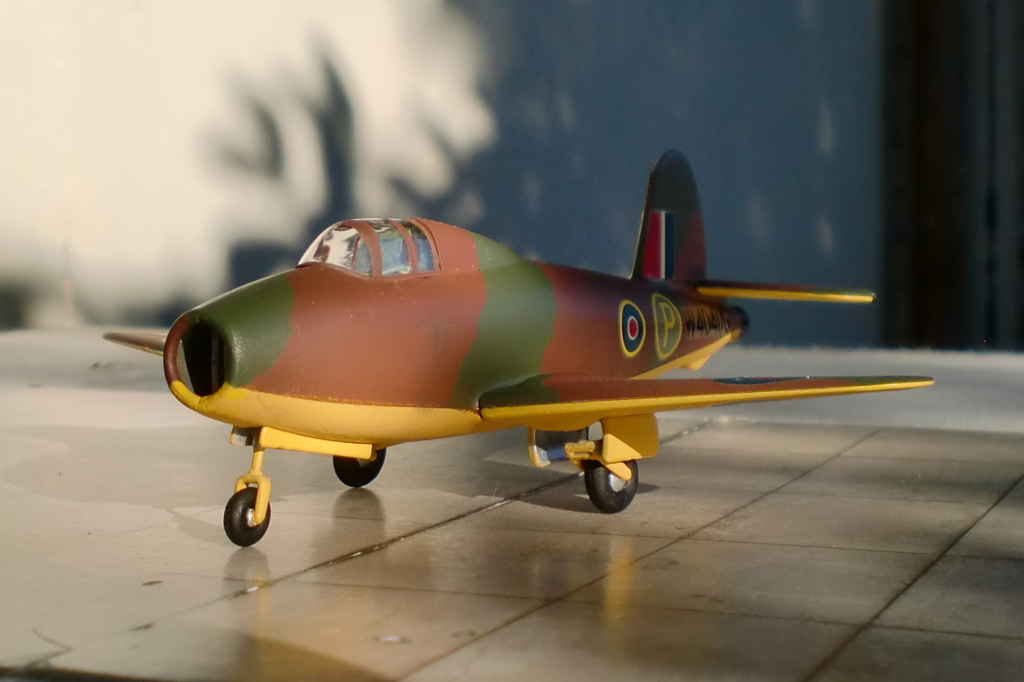
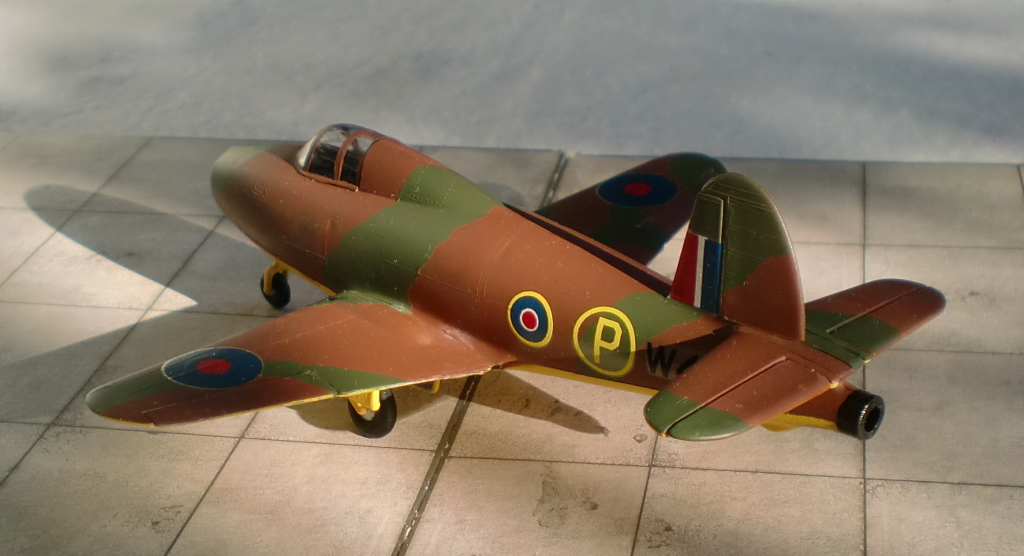
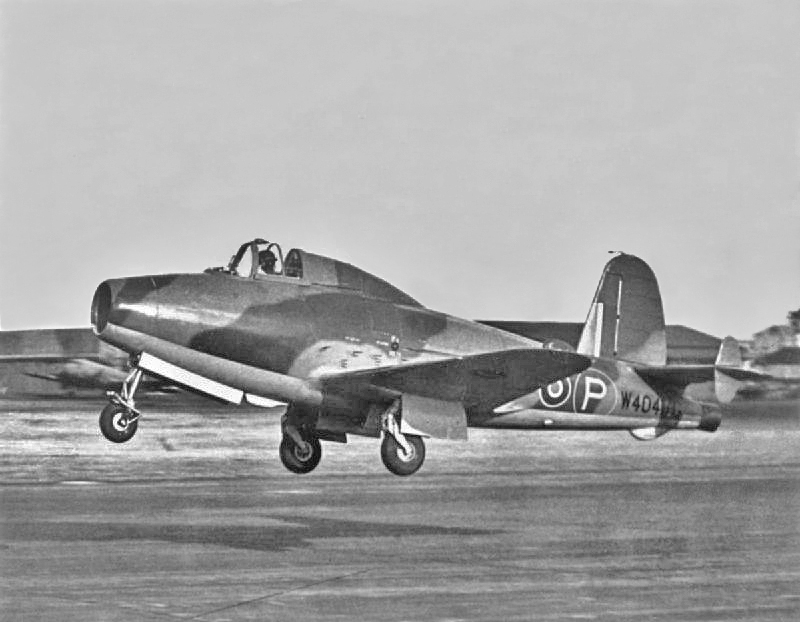
23/04/2018 - Curtiss P-36A Hawk, US Army Air Corps, AZ Models
Perhaps best known as the predecessor of the Curtiss P-40 Warhawk, the
Curtiss P-36 Hawk (also known as Hawk 75, the name of the export version) did
not have a long career with the US Army Air Corps. Already obsolete at the
outbreak of WWII, it was soon retired, but it nevertheless was a success for
Curtiss. Over 1100 units were produced, and over 900 units were export models.
A contemporary of the Messerschmitt Bf 109 and the Hawker Hurricane, the Hawker
was one of the first all-metal monoplanes of the USAAC. In 1935, it competed
with the Seversky P-35 for the first all-metal standard fighter design with
retractable gears for the USAAC, but lost against the P-35. But it was later
decided to continue development of the P-36 as a backup alternative, and in the
end it was the more succesful design – Seversky only produced 196 units, and
Curtiss over 1100 units. Both fighters had one thing in common: they were more
or less outdated when they entered service – aviation technology was advancing
very fast in the 1930s.
The P-36 had an excellent roll rate and good high speed handling, but it was
underpowered and too slow; these problems were later rectified with the P-40,
who had the same basic design but a more streamlined inline engine. The export
model, named Hawk 75, was a major success with the French Armee de l´air (French
Air Force). Although it was outnumbered in the fleet by French-designed fighter
aircraft, it was responsible for almost a third of all air-to-air kills for the
French Air Force and could hold it´s own against the Bf 109. In a rare occasion,
the P-36 was probably the only aircraft that was operated by opposing Air Forces
– when Axis Vichy French Air Force Hawks clashed with the Allied Free French
Forces over North Africa later in the war.
The only combat action for USAAC P-36 types occurred during the attack on Pearl
Harbor. Five P-36 were able to take off on the morning December 7th, 1941. One,
P-36 Nr. 86 of the 15th Pursuit Squadron as shown here, was flown by Lt. Phil
Rasmussen. He became famous as the “Pajama pilot”. Awakened by the noise of the
attack, Rasmussen, still in his pajama, ran to the next unscathed aircraft
avaiable and was able to take off while chased by Zeros. Wild dogfights
followed, and although he only had one operational machine gun, Rasmussen did
shoot down a Zero. Hunted by Zeros and with a badly damaged aircraft, Rasmussen
almost lost control of his fighter but did manage to land his aircraft safely,
although he had lost brakes, rudder and tailwheel control. It was estimated that
his P-36 had around 500 bullet holes ! Rasmussen was celebrated as one of the
first USAAC pilots to score a victory against an enemy fighter in WWII. A
replica of his P-36 (and a pajama-wearing mannequin) can be seen at the National
Museum of the US Air Force near Dayton, Ohio.
The P-36 is surely not an “exotic” aircraft, but most kits of it in 1/72 scale
are quite old, like the ones from Heller or Monogram. I decided to try a
new-released Czech Short run kit from AZ Models, first offered in 2017. It is
still a short run kit, but the new tooling is nice and relatively hassle-free,
at least compared to older short run kits like the above-shown Sack AS-6. Rare
for a short run kit, this one has no photo-etch or resin parts, and I´m quite
thankful for that. Details are OK anyway, at least compared to the older
toolings. Decals are from the kit.
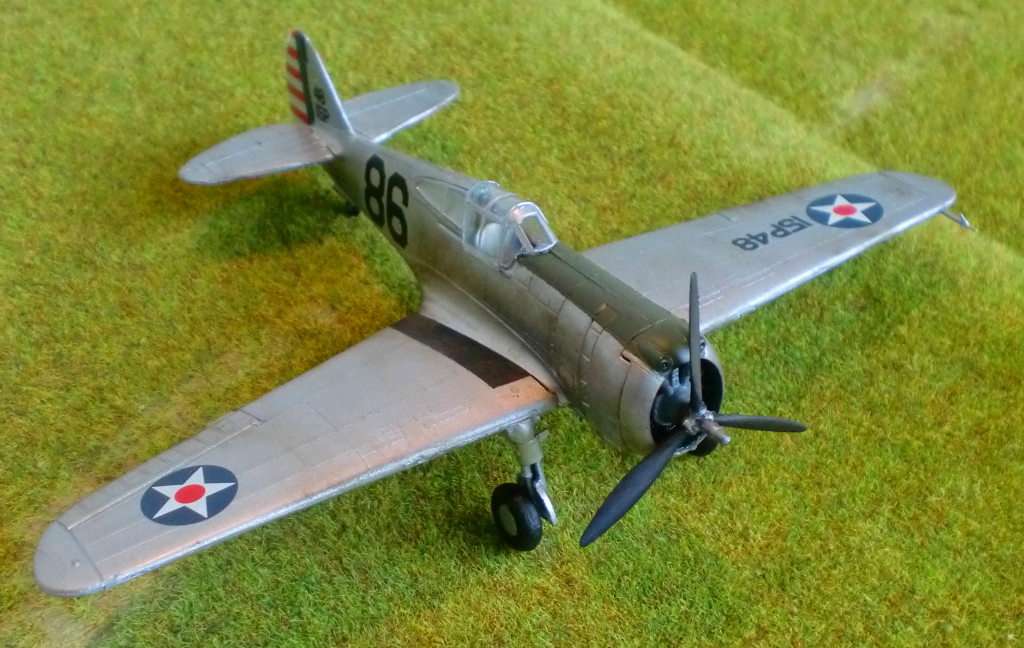
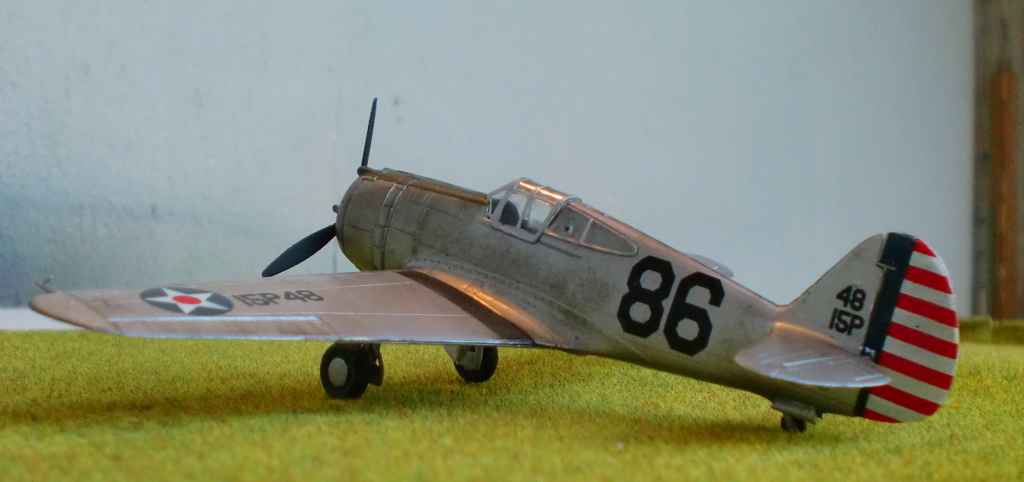
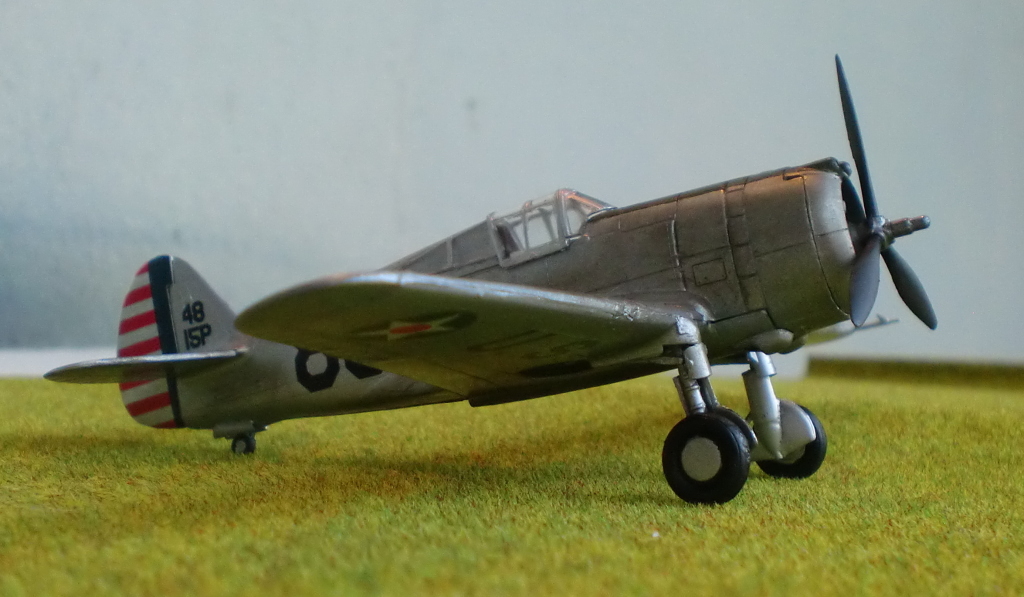
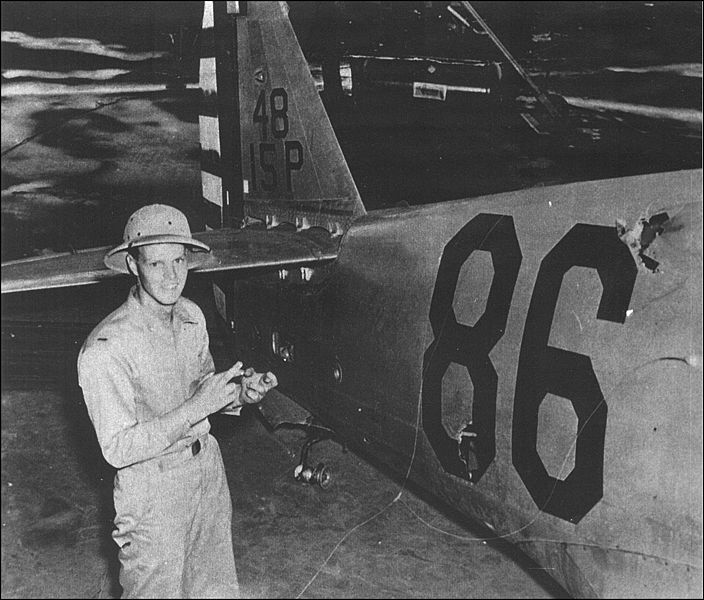
Lt. Rasmussen and his bullet-riddled P-36
31/03/2018 - Sack AS-6 V1 Luftwaffe, Special Hobby
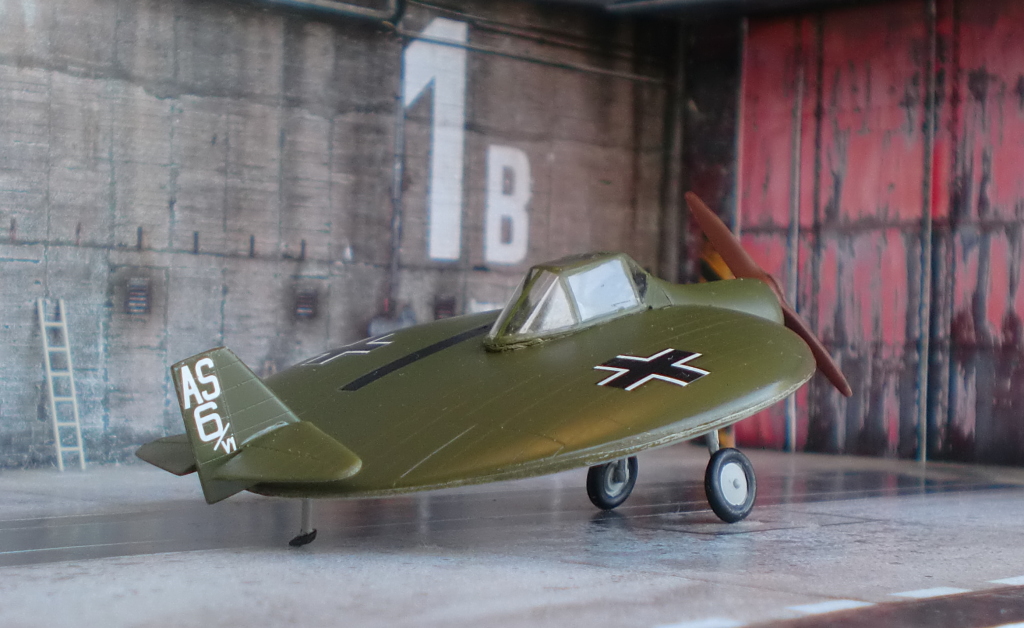
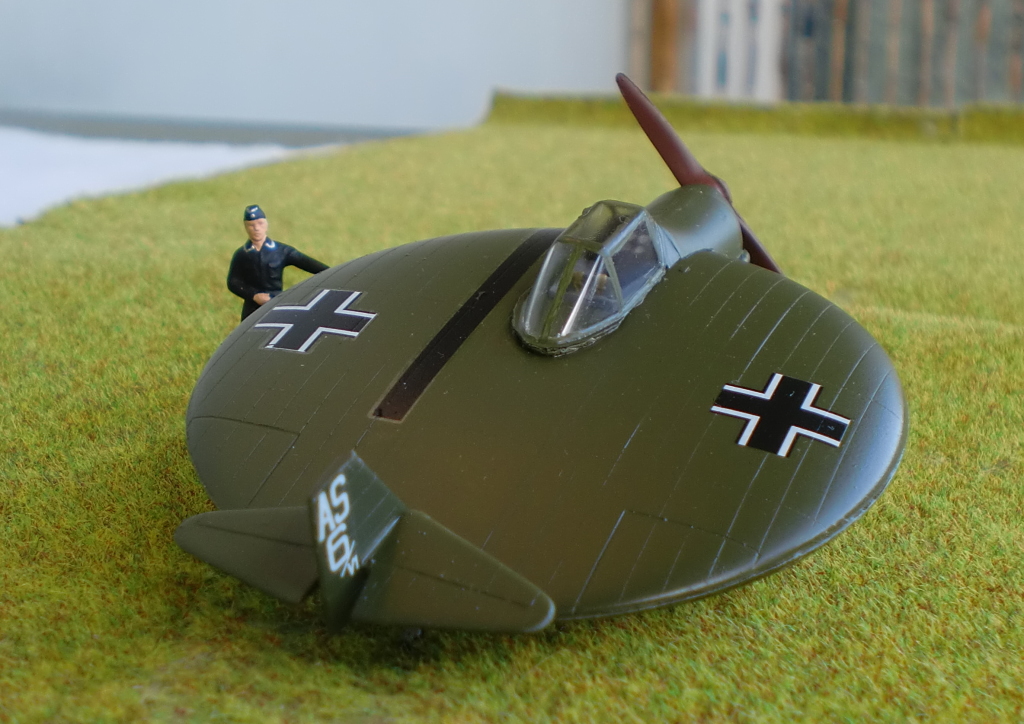
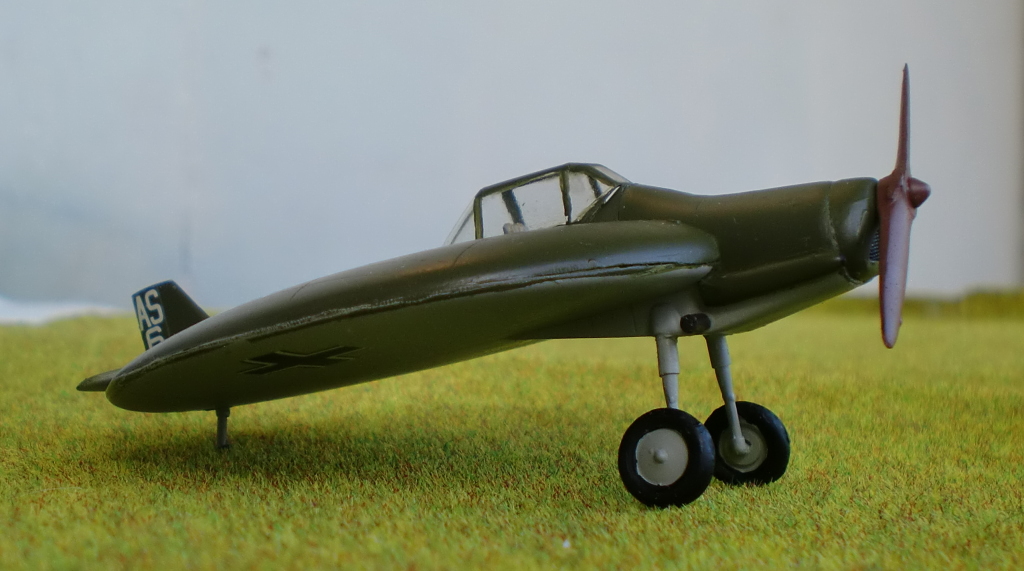
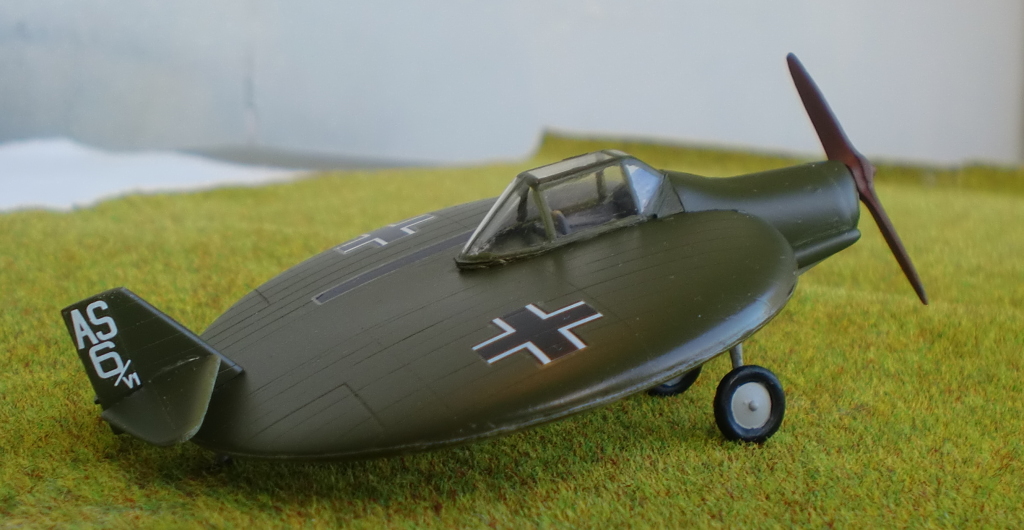
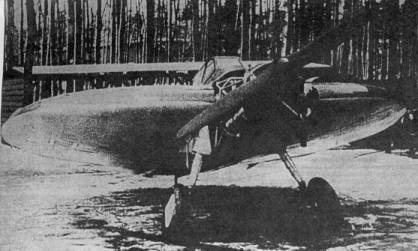
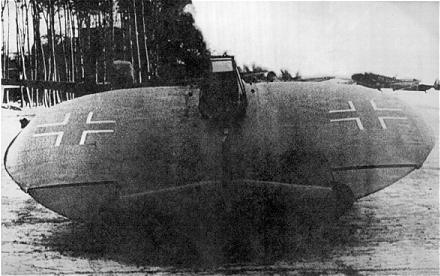
As we have
seen, aircraft designs can end up very different as they were supposed to be –
as it was the case with the Nakajima J1N1 of the Imperial Japanese Navy.
Originally conceived as a land-based, heavy escort fighter, it entered duty as
a long-range reconnaissance plane and ended the war as a designated night
fighter aircraft, the most numerous and succesful aircraft of its kind in the
IJN.
The escort fighter concept was shortly abandoned after the beginning of flight
testing in 1941, as the fully armed aircraft, equipped with gun turrets, was
sluggish and diffcult to handle. Converted to a recon aircraft the J1N1 fared
better, but the big breakthrough came in 1943, when Cmdr. Kozono of the 251th
Air Group based in Rabaul came up with the idea to convert the J1N1 into a
nighter fighter aircraft. It was then when the aircraft received the nickname
“Gekko” (Moonlight).
The basic idea was similar to the German Messerschmitt Bf110, an aircraft of
almost identical design, that was also converted to night-time use. Two 20mm
autocannons were installed firing upward in a 30 degree angle, and two similar
cannons downwards. This could hit bombers in areas they could not observe or
directly defend, mostly underneath. This concept, called “Schräge Musik” was
developed by the Luftwaffe and the Japanese used the same design. As Japanese
radar technology was still underdeveloped compared to the Americans, the first
Gekko nighter fighter versions (named J1N1-S) had to use nose-mounted
searchlights, however the initial success against B-17 and B-24 bombers was
impressive and took the Americans by surprise. Unaware of the existence of the
Gekko, the Americans experienced unexplained losses of nighttime patrols in
early 1943 and it took them some time to realize that the J1N1 was the cause
of this.
Later versions of the Gekko were equipped with radar and different cannon
variations and it was expected they could successful engage the new B-29
bomber. However, against the high-flying and fast B-29 it was a very different
task as they Gekko could barely reach the performance of the Superfortress. A
few crews had considerable success but most of the time the J1N1 fell prey to
B-29 air gunners and especially escort fighters, as it was virtually
defenseless without any defensive weaponry. Only one Gekko survived the war
and in now displayed, fully restaurated, at the Udvar-Hazy Center near
Washington Dulles airport.
This J1N1-S is an early version with “humpback” rear fuselage and no radar. It
belonged to the 302nd Kokutai 2nd Hikotai (squadron) at Toyohashi Air Base.
Four kill markings are painted on the fuselage. This kit is from Fujimi and is
a little hard to get outside Japan (and quite expensive) so I purchased it
directly from an Ebay retailer in Japan. The moulding is good in general,
although details are sparse in some places like cockpit or wheel wheels. So
this is not Tamiya or Hasegawa quality but still OK. Decal variations are for
eight different aircraft which is a nice touch.
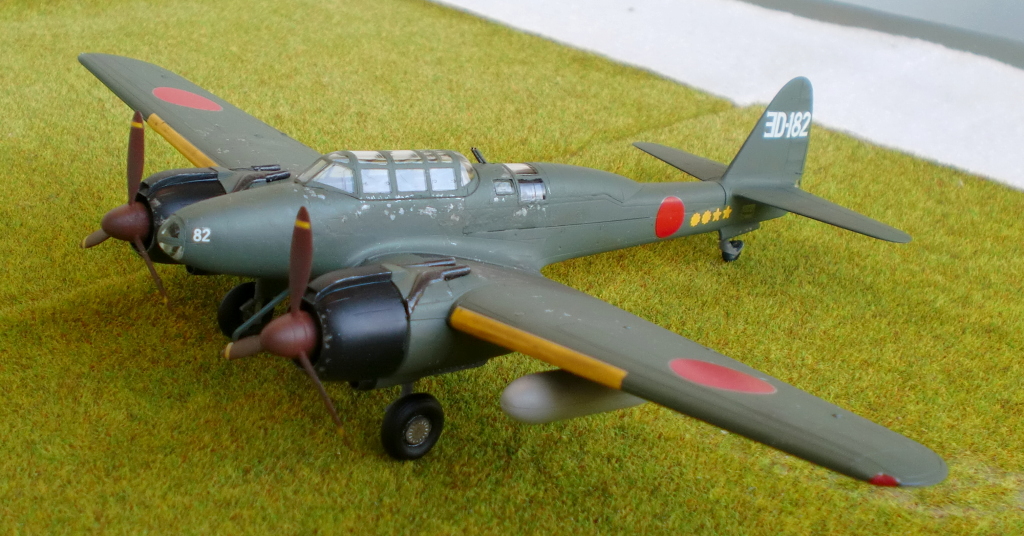
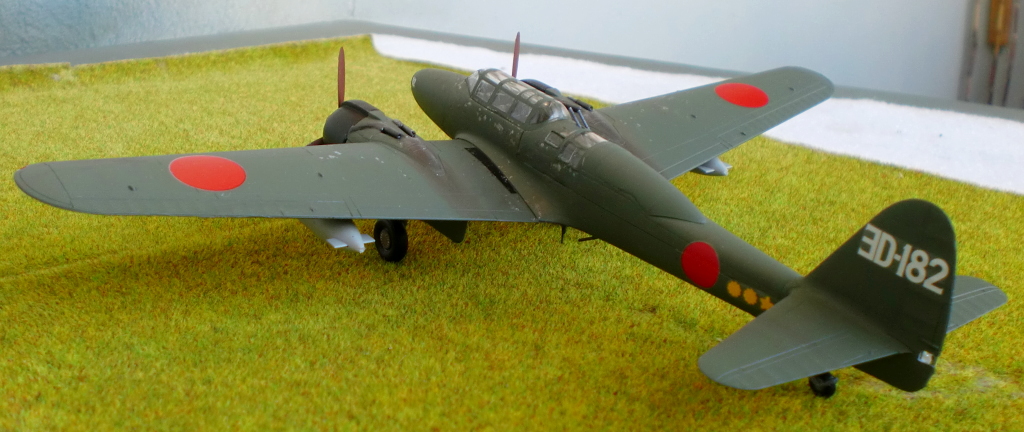
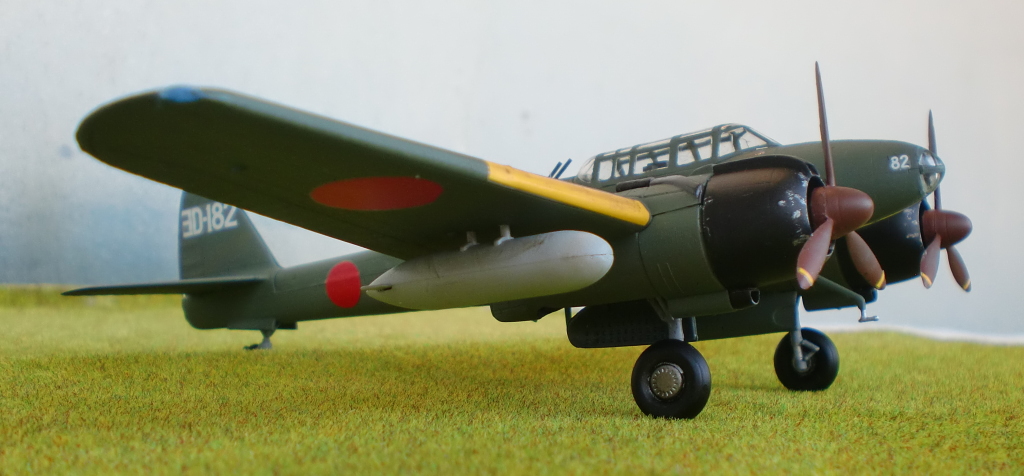
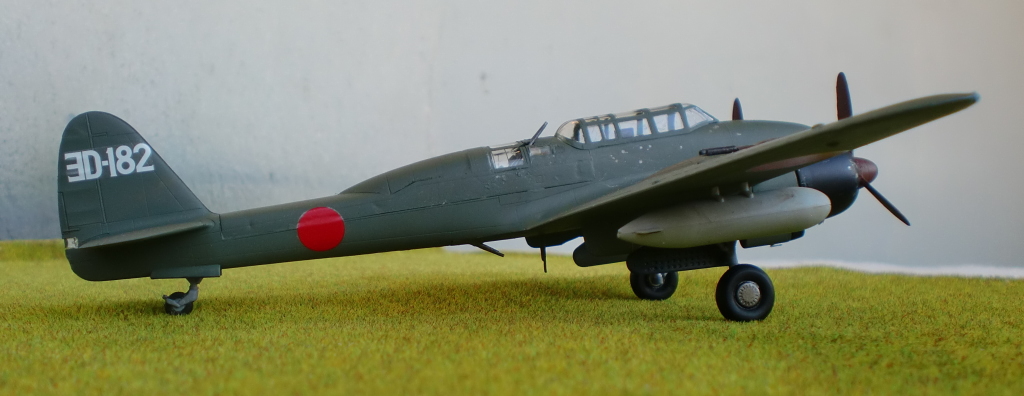
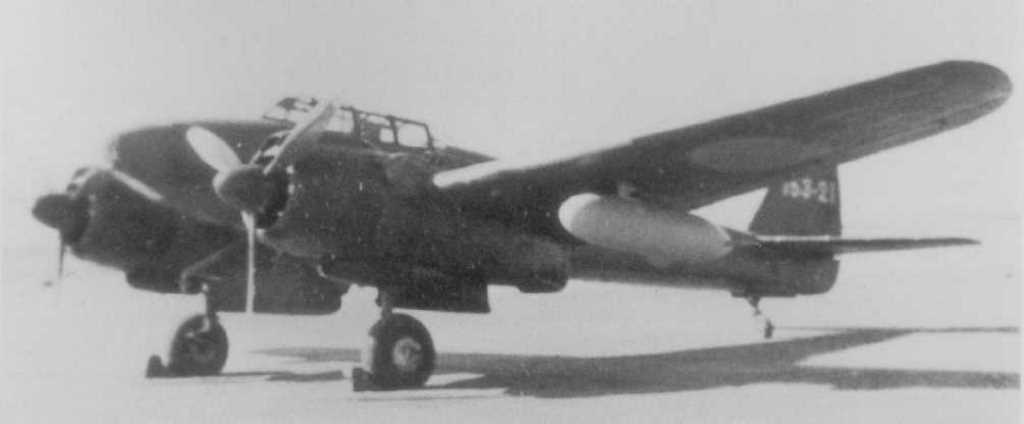
The Sd.Kfz.2 (called
"Kettenkrad", half-track motorcycle) was a German half-track tractor and the
smallest in a series of half-track vehicles of the Army. It was also used as
a towing tractor by the Luftwaffe, especially for jet aircraft. To conserve
fuel, jets were often towed directly to the runway. The Kettenkrad was often
seen towing the Me 262, but also the Arado Ar 234 as seen here. This tiny
kit from S-Model is really nice and fine detailled.
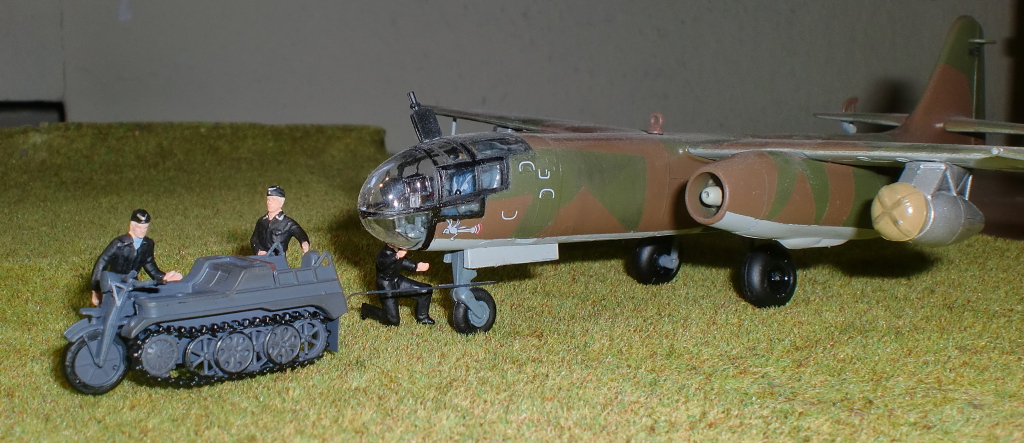
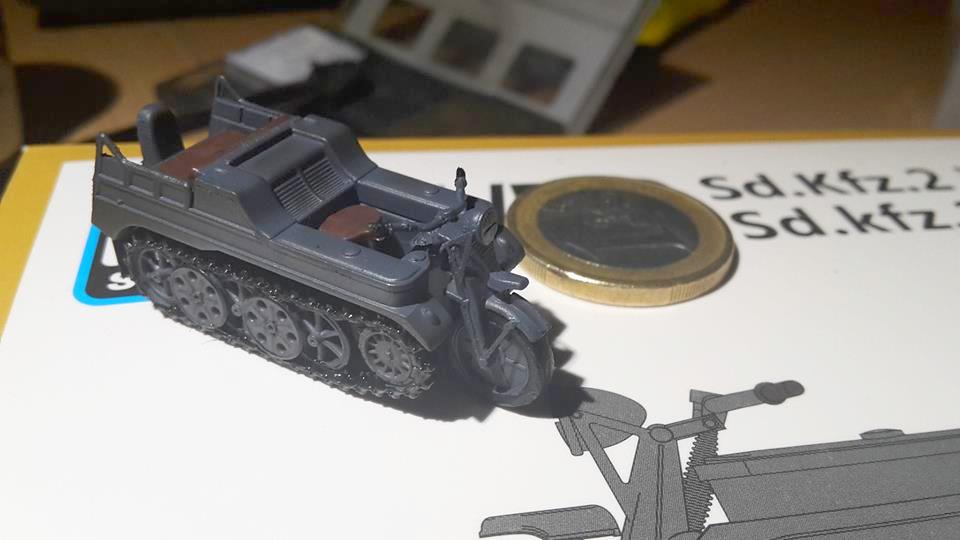
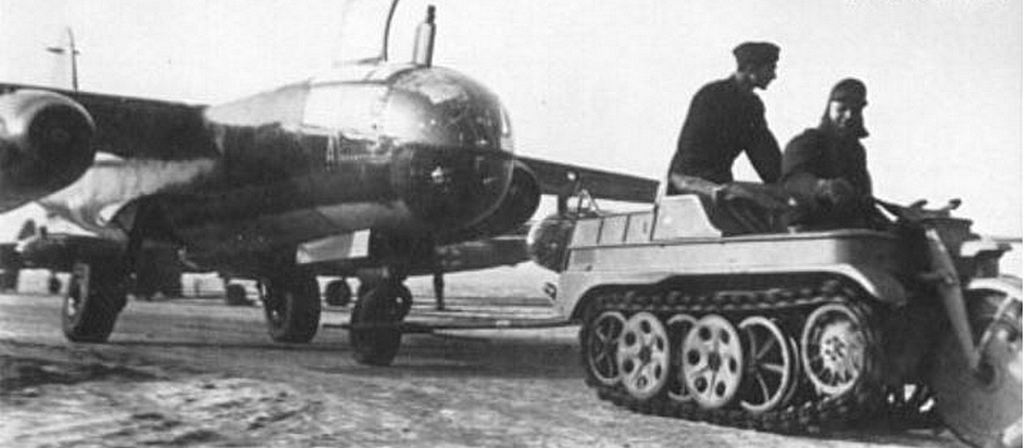
I´m
having a little fun with creating small diorama scenes now, so this is my
first build that is not an aircraft kit. The Toyota GB Starter Truck was
used by both the Imperial Japanese Navy and the Japanese Army Air Force.
Starter Trucks were invented during the first World War and used by Air
Forces around the world. Basically, they used a movable boom connected to a
gear drive transmission, and the boom was attached to the propeller hub and
set into motion.
Not all Japanese fighters could be started this way, the Nakajima Ki-84
pictured here was one of the types suited for this. The Toyota Type "GB"
chassis was the first commercial truck designed by the Toyota Corporation,
and the Starter Truck Conversion could also be used for general utility
work.
This little Hasegawa kit comes with figures and a transportable bomb rack.
Although this is a very old tooling it is very nice. I believe I will add
other Hasegawa trucks like the Isuzu Fuel Tanker later.
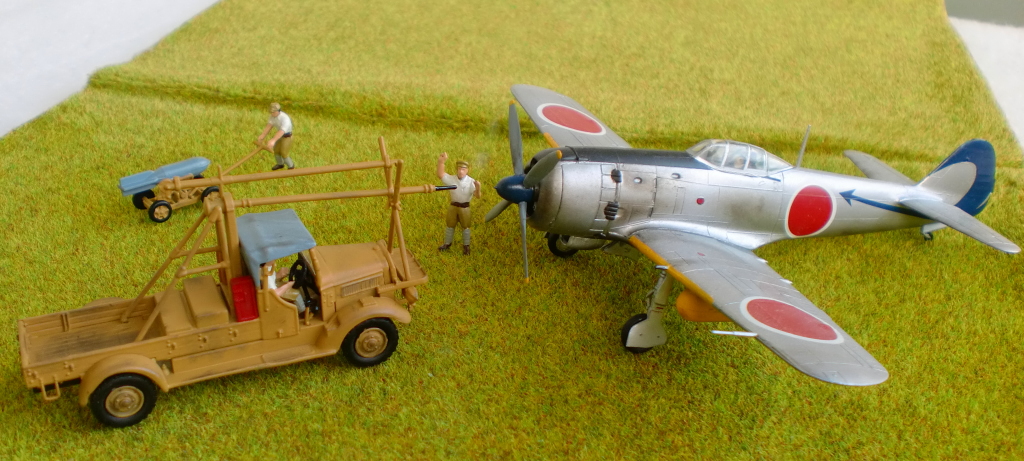
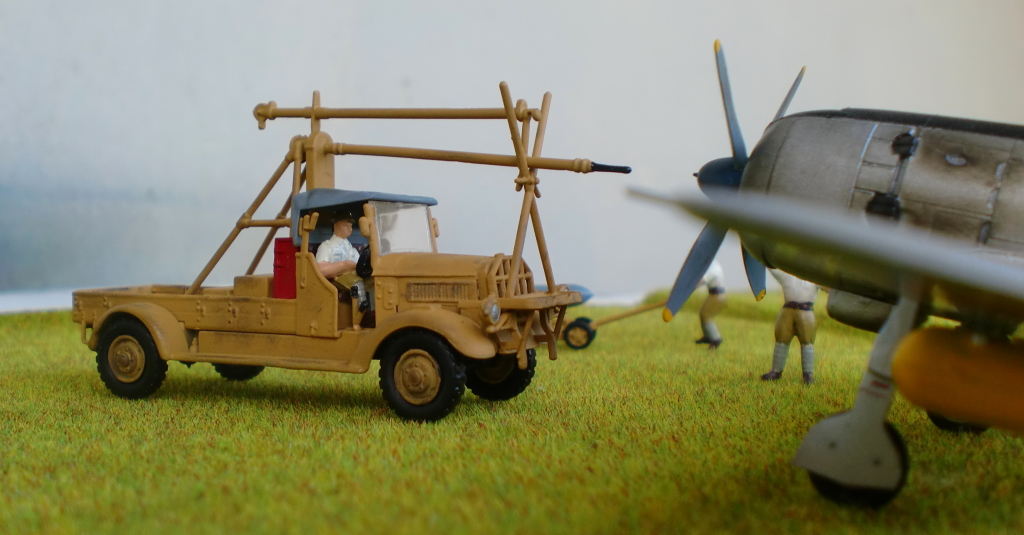
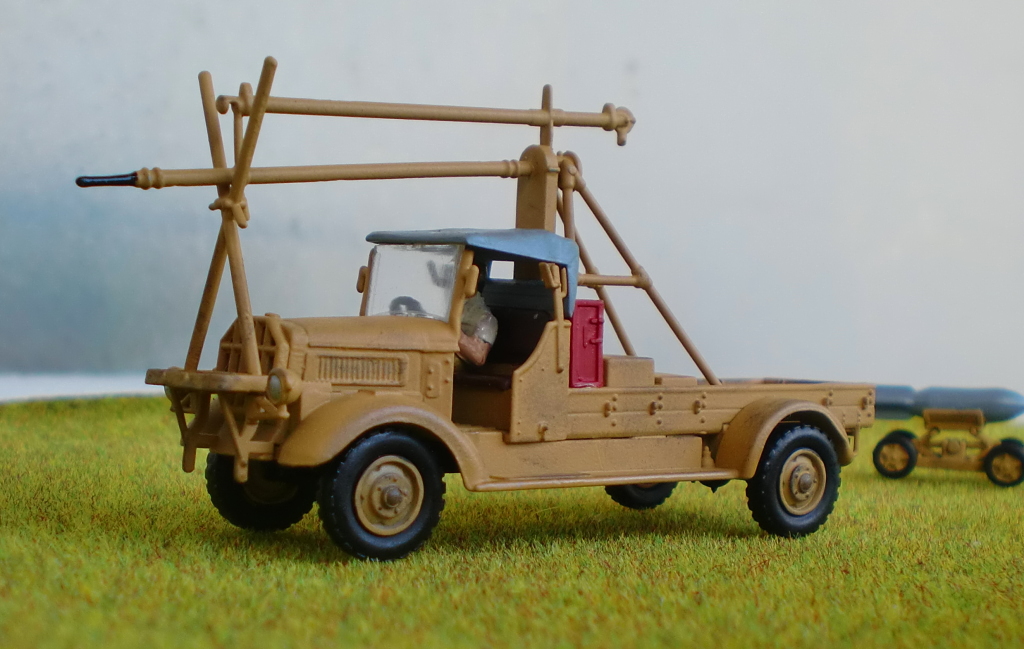
10/02/2018 Westland Lysander Mk III Royal Air Force, Ark Models
Sometimes aircraft have second careers, after not performing so well in
their intended role. This certainly was the case with the Westland Lysander,
a British army co-operation aircraft designed in the mid 1930s. Requested by
the army and designed primarly as a tactical reconnaissance and artillery
spotting aircraft, the Lysander had excellent STOL performance and was an
aerodynamical advanced aircraft despite its somewhat clumsy appearance.
However, in actual combat use, the Lysander did not perform as well as
expected. Too slow, cumbersome and vulnerable against German fighters, the
RAF lost 118 of 175 Lysanders deployed to France and Belgium around the time
of the climatic Battle of Dunkirk. After that, the aircraft was relegated
primarly to liasion and courier duties but found a new role with the
secretive No. 161 Squadron (Special Duties) of the Royal Air Force.
Commissioned in 1942, the No. 161 squadron was performing missions for the
SOE (Special Operations Executive), a covert espionage and sabotage unit of
the British government. The tasks of No. 161 included transporting agents
and spys in and out of German-occupied territory, mainly German-occupied
France. Those flights were usually performed at night, and the Lysanders
landed on provisional airfields in France (STOL performance was a big plus
here) where they deployed or picked up agents. This must have been surely a
sight worthy of a WWII spy movie ! Pilots had to fly in the moonlighted
night, without navigational aids, always in danger to be detected by the
Germans. Lysanders used for this missions were the later Mk III type, as
seen here. They were painted completely back, with a long-range external
fuel tank mounted under the belly and a quick access ladder for the
passengers. Among these were well-known and famous Resistance fighters;
Francois Mitterand, later President of France from 1981 to 1995, was one of
them.
This Lysander Mk III of No. 161 Squadron is from Ark Models, a Russian
company, but the mould is from Frog Models of the U.K. and dating to the
early 1970s. Interestingly, the other Lysander kits on the market are
equally old, from Airfix and Matchbox. This kit is a typical 1970s design,
sparse in details but generally not that bad, although a new up-to-date
tooling would be great anyway. Unfortunately the markings for the all-black
Lysanders are not avaiable as aftermarket decals, but I was able to purchase
the decal sheet from an older Airfix release.
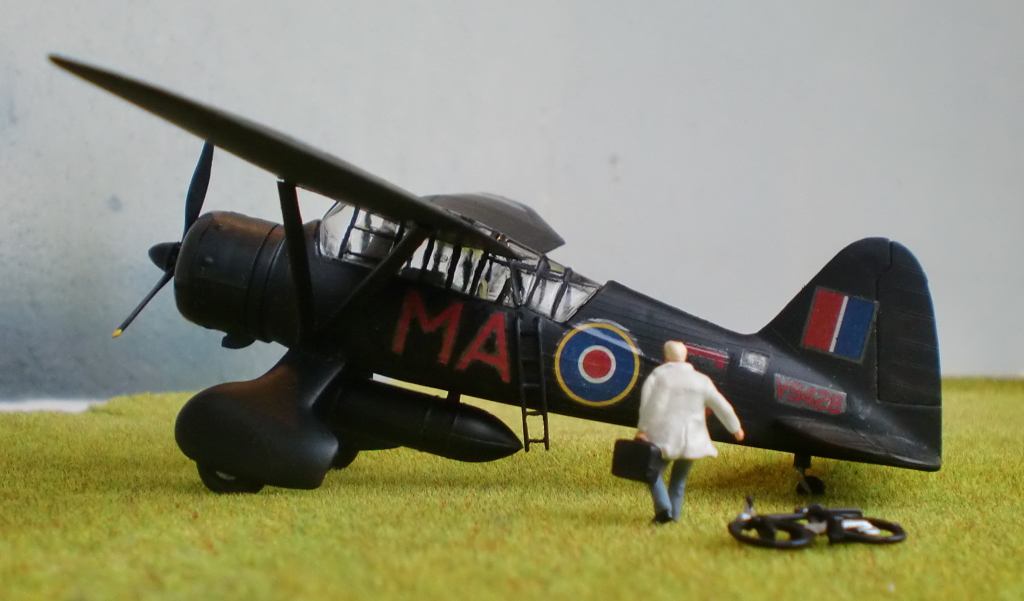
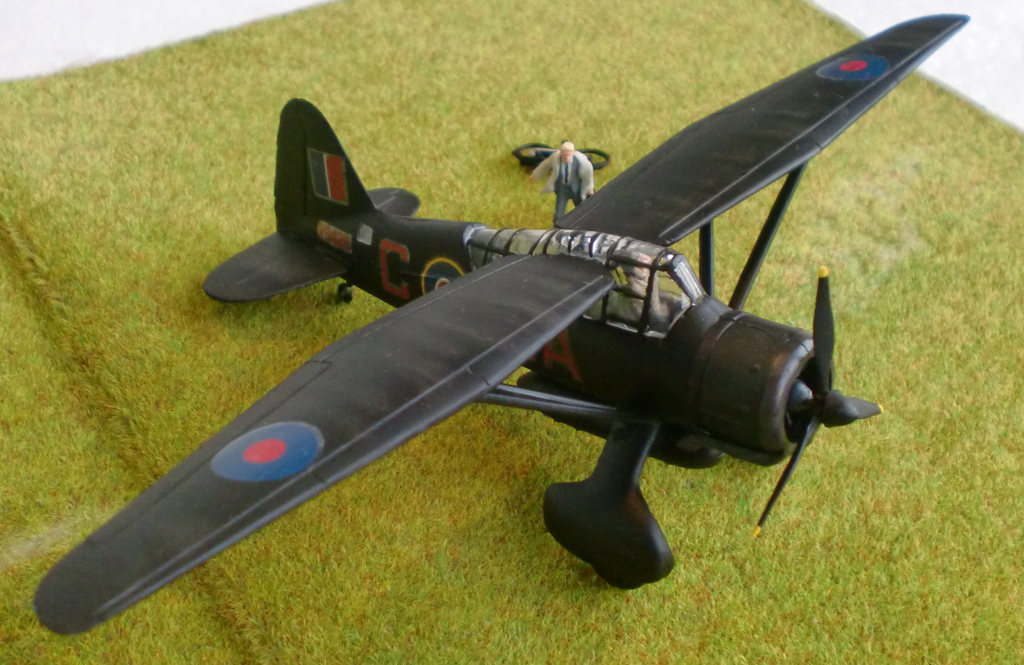
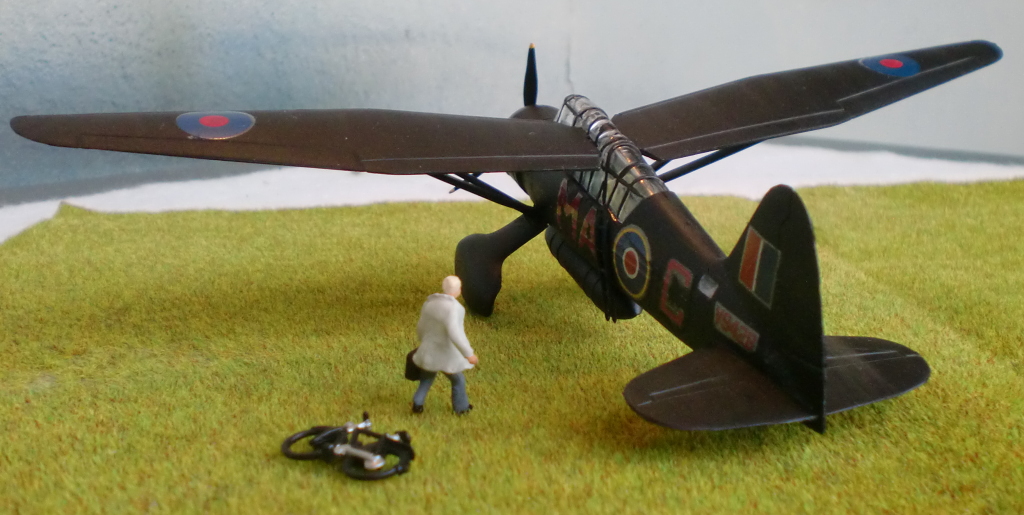
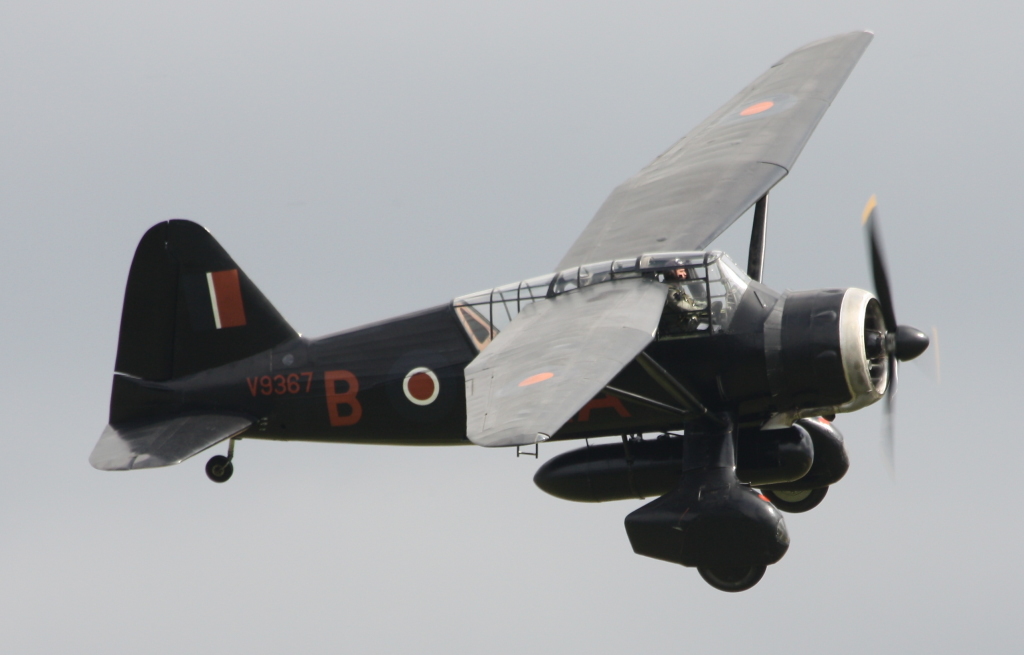
Preserved Lysander of the Shuttleworth Collection. I took this picture at the Flying Legends Airshow in Duxford 2014.